A Novel Hybrid Deep-Learning Approach for Flood-Susceptibility Mapping
Abstract
1. Introduction
2. State of the Art
2.1. Physics-Based Models
2.2. Multi-Criteria Decision Analysis (MCDA) and Statistical Models
2.3. Remote Sensing
2.4. Machine and Deep Learning
3. Contribution of Paper
3.1. Utilization of 2D Models
3.2. Input Features
3.3. Data-Scarcity Challenges
3.4. Introduction of Weighted Residual U-Net Architecture (W-Res-U-Net)
3.5. Validation Strategy
4. Materials and Methods
4.1. Study Area
4.2. Theory of the Physical Model HEC-HMS/RAS
- (a)
- Precipitation Input: Rainfall data are provided as the input to the model, either in the form of historical records or synthetic rainfall generated based on statistical methods.
- (b)
- Rainfall–Runoff Transformation: HEC-HMS uses hydrological methods, such as the Soil Conservation Service (SCS) Curve Number method or the Soil Moisture Accounting (SMA) method, to simulate how rainfall infiltrates into the soil, is stored, and eventually becomes runoff.
- (c)
- Hydrograph Generation: Based on the rainfall–runoff transformation, HEC-HMS generates hydrographs representing the flow of water over time at various points in the watershed.
- (a)
- Geometry Input: River channel geometry, including cross-sectional profiles and hydraulic structures, is input into the model.
- (b)
- Flow-Boundary Conditions: Flow data, such as upstream discharges or boundary conditions, are specified.
- (c)
- Hydraulic Analysis: HEC-RAS solves the equations of continuity and momentum to compute water-surface elevations, flow velocities, and depths along the river channel. The continuity equation ensures mass conservation along the flow path:
- (d)
- Floodplain Mapping: Based on the hydraulic analysis, HEC-RAS can generate floodplain maps showing areas prone to inundation under different flow conditions.
4.3. Machine/Deep Learning Models Employed in This Study
4.3.1. Random Forest (RF)
4.3.2. Convolutional Neural Network (CNN) Model
4.3.3. U-Net Model
- (a)
- Contracting Path (Down-Sampling):
- (b)
- Expansive Path (Up-Sampling):
4.3.4. Residual U-Net Model
4.4. Dataset Used
4.4.1. Flood Factors (Geospatial Database)
- (a)
- Topographical factors:
- Digital Elevation Model (DEM): Provides the elevation data, which are crucial for understanding the terrain. The SRTM DEM data acquired through remote-sensing techniques were fundamental in this regard. Elevation is a fundamental factor in understanding how water moves across landscapes. Low-lying areas or depressions are more prone to water accumulation and flooding, while higher elevations are less likely to flood but may influence downstream areas.
- Slope: Calculated from the SRTM DEM data to determine the steepness of the terrain, which influences runoff. The slope directly influences the speed and volume of surface runoff. Steeper slopes tend to result in faster runoff, reducing the chance of water infiltrating the soil and leading to greater flood potential in downstream areas.
- Flow Accumulation: Uses SRTM DEM to determine the accumulated flow to each cell, aiding in identifying potential flood paths. Flow accumulation helps identify areas where water is likely to gather, such as valleys or river channels, making these areas more prone to flooding.
- Flow Direction: Uses SRTM DEM to model the direction of water flow across the terrain. Understanding the flow direction is essential for predicting water movement during rainfall events. It allows for the modeling of drainage patterns, helping to forecast where water will travel and which areas it might affect downstream.
- Topographic Wetness Index (TWI): originally introduced by [67], calculated using the formula:
- Topographic Roughness Index (TRI) and Topographic Position Index (TPI): are two key morphological factors closely linked to flooding, as noted by [68]. TPI represents the average elevation difference between a target cell and its surrounding cells, while TRI is the average squared difference in elevation, providing a measure of terrain ruggedness. Both indices, derived from SRTM-DEM, are crucial for understanding landform position and terrain roughness, which significantly influence water-flow and accumulation patterns.
- (b)
- Environmental factors:
- Land Use and Land Cover (LULC): Classification through the SVM method using Landsat imagery to determine different land types and their impact on flood behavior. Different land uses and covers influence the hydrological response of an area. For example, forests and wetlands promote water infiltration and storage, reducing runoff, while urban and built-up areas increase impervious surfaces [51], leading to greater runoff and flood potential.
- Lithology: Geological composition of the area, affecting water infiltration and runoff. Lithology impacts how much water can infiltrate the ground versus how much will run off. Permeable rocks (like sandstones) allow water to infiltrate, reducing surface runoff and flood risk, whereas impermeable rocks (such as clays or granites) limit infiltration [69], increasing runoff and flood potential. Therefore, understanding lithology is essential for determining areas more prone to flooding based on the underlying geology.
- Normalized Difference Vegetation Index (NDVI) was first introduced by [70] in 1974 as a measure of vegetation density using red and near-infrared bands. It became widely adopted for monitoring vegetation health and assessing land cover.
- Normalized Difference Built-up Index (NDBI): was proposed by [71] as a method for identifying built-up areas in Landsat imagery.
- Modified Normalized Difference Water Index (MNDWI) was developed by [72] in 2006 to improve water feature extraction in satellite imagery, by modifying the Normalized Difference Water Index (NDWI) using the green and shortwave infrared bands.
- (c)
- Meteorological and hydrological factors:
- Precipitation: The rainfall data are from our nine rainfall stations interpolated using the IDW method to obtain raster maps.
- Flow Discharge: Measurement of water flow in rivers using the HEC–HMS model, crucial for understanding flood potential.
- Curve Number (CN): Derived from LULC and soil data to estimate direct runoff potential.
- Hydrologic Soil Group (HSG): Classification based on soil infiltration rates, affecting runoff.
- Stream Power Index (SPI):
- Stream Transportation Index (STI): estimates the sediment transport capacity of flowing water and reflects sediment mobility, with higher STI values associated with an increased frequency of floods [74]. The STI is calculated using the formula:
- Distance to Rivers (DTR): Calculated using GIS techniques to understand the influence of proximity to rivers on flooding risk.
4.4.2. Flood-Inventory Data
5. Proposed Approach
5.1. Step 1: Time Series Modeling
5.2. Step 2: Loss-Function Comparison
5.2.1. Binary Cross-Entropy Loss
5.2.2. Sigmoid Focal Loss
5.3. Step 3: Dual-Loss Function
6. Results
6.1. Step 1: Time Series Modelling Results
6.1.1. Scenario 1 Training and Test on the Same Sub-Basins
- The RF model consistently underperforms when it comes to detecting flooded areas, with sensitivity levels ranging from 50.14% (during training in 2000 and testing in 2000) to 58.42% (during training from 2000 to 2020) during testing in 2000 and falling to 52.16% during testing in 2020.
- The CNN model demonstrates improved sensitivity, rising from 92.37% to 96.14% during multi-year training and tests in 2000, though it decreases to 94.62% in the 2020 test.
- The Unet model also exhibits sensitivity improvements, increasing from 92.12% to 96.51% with multi-year training and tests in 2000, followed by a reduction to 95.01% in the 2020 test.
- The Res–Unet model showcases the highest sensitivity gains, improving from 92.23% to 97.76% when training spans from the year 2000 to 2020 and tests in 2000, with a slight drop to 96.08% in the 2020 test.
6.1.2. Scenario 2 Training and Test on Different Sub-Basins
- The RF model consistently fails to detect flooded areas in other sub-basins, maintaining a sensitivity of 0% across all training periods.
- The CNN model shows optimal performance with multi-year training, achieving a sensitivity of 62.71% when trained and tested in 2000, and improving to 63.52% and 64.45% from 2000 to 2020. However, sensitivity declines in subsequent years, with a rate of 61.23% in the 2020 test.
- The U-net model exhibits increased sensitivity with training from 2000 to 2020, achieving 66.9% in the 2000 test. However, there is a sensitivity decline in later years, dropping to 65.11% in the 2020 test.
- The Res–Unet model shows improved sensitivity with multi-year training, achieving 67.97% in the 2000 test. Nonetheless, it experienced a slight decline in the 2020 test, with sensitivity dropping to 67.36%, indicating a performance decrease compared to other models in subsequent years.
6.2. Step 2: Lost-Function Comparison
6.3. Step 3: Dual-Loss Function
6.3.1. CNN Model
6.3.2. U-Net Model
6.3.3. W-Res-U-Net Model
7. Discussion
- Strengths: A key strength of this study is the integration of physical models with deep-learning techniques, leading to improved flood-prediction accuracy. By employing an image-to-image segmentation approach, we moved beyond traditional point-to-point methods, allowing for more detailed spatial analysis and capturing the complex spatial patterns of flooding. The use of a weighted loss function addressed the imbalance in the target data, enhancing the model’s sensitivity to flooded areas. Additionally, the inclusion of real-world ground truth points alongside simulated data enabled a more comprehensive evaluation of the model’s performance and reinforced its generalizability.
- Limitation: A limitation of this study is the difficulty in generalizing model performance across sub-basins with diverse hydrological characteristics. The comparison between our image-based segmentation approach and traditional point-based methods is also challenging due to fundamental differences in methodology and data representation. Furthermore, despite the improvements made through loss function adjustments, the imbalance in the target data (flooded versus non-flooded areas) poses an ongoing challenge. Future work is needed to further optimize the models for different hydrological and geographic conditions and to develop standardized methods for comparing different flood-susceptibility mapping approaches.
8. Conclusions
Author Contributions
Funding
Data Availability Statement
Acknowledgments
Conflicts of Interest
References
- Chapi, K.; Singh, V.P.; Shirzadi, A.; Shahabi, H.; Bui, D.T.; Pham, B.T.; Khosravi, K. A Novel Hybrid Artificial Intelligence Approach for Flood Susceptibility Assessment. Environ. Model. Softw. 2017, 95, 229–245. [Google Scholar] [CrossRef]
- Chen, W.; Li, Y.; Xue, W.; Shahabi, H.; Li, S.; Hong, H.; Wang, X.; Bian, H.; Zhang, S.; Pradhan, B.; et al. Modeling Flood Susceptibility Using Data-Driven Approaches of Naïve Bayes Tree, Alternating Decision Tree, and Random Forest Methods. Sci. Total Environ. 2020, 701, 134979. [Google Scholar] [CrossRef]
- Fang, L.; Huang, J.; Cai, J.; Nitivattananon, V. Hybrid Approach for Flood Susceptibility Assessment in a Flood-Prone Mountainous Catchment in China. J. Hydrol. 2022, 612, 128091. [Google Scholar] [CrossRef]
- Khalil, U.; Khan, N.M. Floodplain Mapping for Indus River: Chashma—Taunsa Reach. Pak. J. Eng. Appl. Sci. 2017, 20, 30–48. [Google Scholar]
- Gharakhanlou, N.M.; Perez, L. Flood Susceptible Prediction through the Use of Geospatial Variables and Machine Learning Methods. J. Hydrol. 2023, 617, 129121. [Google Scholar] [CrossRef]
- Ntanganedzeni, B.; Nobert, J. Flood Risk Assessment in Luvuvhu River, Limpopo Province, South Africa. Phys. Chem. Earth Parts ABC 2021, 124, 102959. [Google Scholar] [CrossRef]
- Cao, H.; Zhang, H.; Wang, C.; Zhang, B. Operational Flood Detection Using Sentinel-1 SAR Data over Large Areas. Water 2019, 11, 786. [Google Scholar] [CrossRef]
- Liang, J.; Liu, D. A Local Thresholding Approach to Flood Water Delineation Using Sentinel-1 SAR Imagery. ISPRS J. Photogramm. Remote Sens. 2020, 159, 53–62. [Google Scholar] [CrossRef]
- Nhangumbe, M.; Nascetti, A.; Ban, Y. Multi-Temporal Sentinel-1 SAR and Sentinel-2 MSI Data for Flood Mapping and Damage Assessment in Mozambique. ISPRS Int. J. Geo-Inf. 2023, 12, 53. [Google Scholar] [CrossRef]
- Tamiru Haile, A.; Worku Bekele, T.; Rientjes, T. Interannual Comparison of Historical Floods through Flood Detection Using Multi-Temporal Sentinel-1 SAR Images, Awash River Basin, Ethiopia. Int. J. Appl. Earth Obs. Geoinf. 2023, 124, 103505. [Google Scholar] [CrossRef]
- Notti, D.; Giordan, D.; Caló, F.; Pepe, A.; Zucca, F.; Galve, J. Potential and Limitations of Open Satellite Data for Flood Mapping. Remote Sens. 2018, 10, 1673. [Google Scholar] [CrossRef]
- Shastry, A.; Carter, E.; Coltin, B.; Sleeter, R.; McMichael, S.; Eggleston, J. Mapping Floods from Remote Sensing Data and Quantifying the Effects of Surface Obstruction by Clouds and Vegetation. Remote Sens. Environ. 2023, 291, 113556. [Google Scholar] [CrossRef]
- Marzukhi, S.; Sidik, M.A.S.M.; Nasir, H.M.; Zainol, Z.; Ismail, M.N. Flood Detection and Warning System (FLoWS). In Proceedings of the 12th International Conference on Ubiquitous Information Management and Communication, Langkawi, Malaysia, 5–7 January 2018; pp. 1–4. [Google Scholar]
- Bentivoglio, R.; Isufi, E.; Jonkman, S.N.; Taormina, R. Deep Learning Methods for Flood Mapping: A Review of Existing Applications and Future Research Directions. Hydrol. Earth Syst. Sci. 2022, 26, 4345–4378. [Google Scholar] [CrossRef]
- Renschler, C.S.; Wang, Z. Multi-Source Data Fusion and Modeling to Assess and Communicate Complex Flood Dynamics to Support Decision-Making for Downstream Areas of Dams: The 2011 Hurricane Irene and Schoharie Creek Floods, NY. Int. J. Appl. Earth Obs. Geoinf. 2017, 62, 157–173. [Google Scholar] [CrossRef]
- Rajib, A.; Liu, Z.; Merwade, V.; Tavakoly, A.A.; Follum, M.L. Towards a Large-Scale Locally Relevant Flood Inundation Modeling Framework Using SWAT and LISFLOOD-FP. J. Hydrol. 2020, 581, 124406. [Google Scholar] [CrossRef]
- Seenu, P.Z.; Venkata Rathnam, E.; Jayakumar, K.V. Visualisation of Urban Flood Inundation Using SWMM and 4D GIS. Spat. Inf. Res. 2020, 28, 459–467. [Google Scholar] [CrossRef]
- Afshari, S.; Tavakoly, A.A.; Rajib, M.A.; Zheng, X.; Follum, M.L.; Omranian, E.; Fekete, B.M. Comparison of New Generation Low-Complexity Flood Inundation Mapping Tools with a Hydrodynamic Model. J. Hydrol. 2018, 556, 539–556. [Google Scholar] [CrossRef]
- Hammami, S.; Zouhri, L.; Souissi, D.; Souei, A.; Zghibi, A.; Marzougui, A.; Dlala, M. Application of the GIS Based Multi-Criteria Decision Analysis and Analytical Hierarchy Process (AHP) in the Flood Susceptibility Mapping (Tunisia). Arab. J. Geosci. 2019, 12, 653. [Google Scholar] [CrossRef]
- Shadmehri Toosi, A.; Calbimonte, G.H.; Nouri, H.; Alaghmand, S. River Basin-Scale Flood Hazard Assessment Using a Modified Multi-Criteria Decision Analysis Approach: A Case Study. J. Hydrol. 2019, 574, 660–671. [Google Scholar] [CrossRef]
- Msabi, M.M.; Makonyo, M. Flood Susceptibility Mapping Using GIS and Multi-Criteria Decision Analysis: A Case of Dodoma Region, Central Tanzania. Remote Sens. Appl. Soc. Environ. 2021, 21, 100445. [Google Scholar] [CrossRef]
- Shahiri Tabarestani, E.; Afzalimehr, H. A Comparative Assessment of Multi-Criteria Decision Analysis for Flood Susceptibility Modelling. Geocarto Int. 2022, 37, 5851–5874. [Google Scholar] [CrossRef]
- Tehrany, M.S.; Lee, M.-J.; Pradhan, B.; Jebur, M.N.; Lee, S. Flood Susceptibility Mapping Using Integrated Bivariate and Multivariate Statistical Models. Environ. Earth Sci. 2014, 72, 4001–4015. [Google Scholar] [CrossRef]
- Youssef, A.M.; Pradhan, B.; Sefry, S.A. Flash Flood Susceptibility Assessment in Jeddah City (Kingdom of Saudi Arabia) Using Bivariate and Multivariate Statistical Models. Environ. Earth Sci. 2016, 75, 12. [Google Scholar] [CrossRef]
- Khosravi, K.; Pourghasemi, H.R.; Chapi, K.; Bahri, M. Flash Flood Susceptibility Analysis and Its Mapping Using Different Bivariate Models in Iran: A Comparison between Shannon’s Entropy, Statistical Index, and Weighting Factor Models. Environ. Monit. Assess. 2016, 188, 656. [Google Scholar] [CrossRef] [PubMed]
- Costache, R. Flood Susceptibility Assessment by Using Bivariate Statistics and Machine Learning Models—A Useful Tool for Flood Risk Management. Water Resour. Manag. 2019, 33, 3239–3256. [Google Scholar] [CrossRef]
- Ali, S.A.; Parvin, F.; Pham, Q.B.; Vojtek, M.; Vojteková, J.; Costache, R.; Linh, N.T.T.; Nguyen, H.Q.; Ahmad, A.; Ghorbani, M.A. GIS-Based Comparative Assessment of Flood Susceptibility Mapping Using Hybrid Multi-Criteria Decision-Making Approach, Naïve Bayes Tree, Bivariate Statistics and Logistic Regression: A Case of Topľa Basin, Slovakia. Ecol. Indic. 2020, 117, 106620. [Google Scholar] [CrossRef]
- Hamidi, E.; Peter, B.G.; Munoz, D.F.; Moftakhari, H.; Moradkhani, H. Fast Flood Extent Monitoring With SAR Change Detection Using Google Earth Engine. IEEE Trans. Geosci. Remote Sens. 2023, 61, 4201419. [Google Scholar] [CrossRef]
- Güvel, Ş.P.; Akgül, M.A.; Aksu, H. Flood Inundation Maps Using Sentinel-2: A Case Study in Berdan Plain. Water Supply 2022, 22, 4098–4108. [Google Scholar] [CrossRef]
- Psomiadis, E.; Diakakis, M.; Soulis, K.X. Combining SAR and Optical Earth Observation with Hydraulic Simulation for Flood Mapping and Impact Assessment. Remote Sens. 2020, 12, 3980. [Google Scholar] [CrossRef]
- Tavus, B.; Kocaman, S.; Nefeslioglu, H.A.; Gokceoglu, C. A Fusion Approach for Flood Mapping Using Sentinel-1 and Sentinel-2 Datasets. Int. Arch. Photogramm. Remote Sens. Spat. Inf. Sci. 2020, XLIII-B3-2020, 641–648. [Google Scholar] [CrossRef]
- Khosravi, K.; Shahabi, H.; Pham, B.T.; Adamowski, J.; Shirzadi, A.; Pradhan, B.; Dou, J.; Ly, H.-B.; Gróf, G.; Ho, H.L.; et al. A Comparative Assessment of Flood Susceptibility Modeling Using Multi-Criteria Decision-Making Analysis and Machine Learning Methods. J. Hydrol. 2019, 573, 311–323. [Google Scholar] [CrossRef]
- Gudiyangada Nachappa, T.; Tavakkoli Piralilou, S.; Gholamnia, K.; Ghorbanzadeh, O.; Rahmati, O.; Blaschke, T. Flood Susceptibility Mapping with Machine Learning, Multi-Criteria Decision Analysis and Ensemble Using Dempster Shafer Theory. J. Hydrol. 2020, 590, 125275. [Google Scholar] [CrossRef]
- Towfiqul Islam, A.R.M.; Talukdar, S.; Mahato, S.; Kundu, S.; Eibek, K.U.; Pham, Q.B.; Kuriqi, A.; Linh, N.T.T. Flood Susceptibility Modelling Using Advanced Ensemble Machine Learning Models. Geosci. Front. 2021, 12, 101075. [Google Scholar] [CrossRef]
- Madhuri, R.; Sistla, S.; Srinivasa Raju, K. Application of Machine Learning Algorithms for Flood Susceptibility Assessment and Risk Management. J. Water Clim. Chang. 2021, 12, 2608–2623. [Google Scholar] [CrossRef]
- Prasad, P.; Loveson, V.J.; Das, B.; Kotha, M. Novel Ensemble Machine Learning Models in Flood Susceptibility Mapping. Geocarto Int. 2022, 37, 4571–4593. [Google Scholar] [CrossRef]
- Seydi, S.T.; Kanani-Sadat, Y.; Hasanlou, M.; Sahraei, R.; Chanussot, J.; Amani, M. Comparison of Machine Learning Algorithms for Flood Susceptibility Mapping. Remote Sens. 2022, 15, 192. [Google Scholar] [CrossRef]
- Youssef, A.M. Optimal Flood Susceptibility Model Based on Performance Comparisons of LR, EGB, and RF Algorithms. Nat. Hazards 2023, 115, 1071–1096. [Google Scholar] [CrossRef]
- Saber, M.; Boulmaiz, T.; Guermoui, M.; Abdrabo, K.I.; Kantoush, S.A.; Sumi, T.; Boutaghane, H.; Nohara, D.; Mabrouk, E. Examining LightGBM and CatBoost Models for Wadi Flash Flood Susceptibility Prediction. Geocarto Int. 2022, 37, 7462–7487. [Google Scholar] [CrossRef]
- Saravanan, S.; Abijith, D.; Reddy, N.M.; Kss, P.; Janardhanam, N.; Sathiyamurthi, S.; Sivakumar, V. Flood Susceptibility Mapping Using Machine Learning Boosting Algorithms Techniques in Idukki District of Kerala India. Urban Clim. 2023, 49, 101503. [Google Scholar] [CrossRef]
- Tien Bui, D.; Hoang, N.-D.; Martínez-Álvarez, F.; Ngo, P.-T.T.; Hoa, P.V.; Pham, T.D.; Samui, P.; Costache, R. A Novel Deep Learning Neural Network Approach for Predicting Flash Flood Susceptibility: A Case Study at a High Frequency Tropical Storm Area. Sci. Total Environ. 2020, 701, 134413. [Google Scholar] [CrossRef]
- Bui, Q.-T.; Nguyen, Q.-H.; Nguyen, X.L.; Pham, V.D.; Nguyen, H.D.; Pham, V.-M. Verification of Novel Integrations of Swarm Intelligence Algorithms into Deep Learning Neural Network for Flood Susceptibility Mapping. J. Hydrol. 2020, 581, 124379. [Google Scholar] [CrossRef]
- Ahmadlou, M.; Al-Fugara, A.; Al-Shabeeb, A.R.; Arora, A.; Al-Adamat, R.; Pham, Q.B.; Al-Ansari, N.; Linh, N.T.T.; Sajedi, H. Flood Susceptibility Mapping and Assessment Using a Novel Deep Learning Model Combining Multilayer Perceptron and Autoencoder Neural Networks. J. Flood Risk Manag. 2021, 14, e12683. [Google Scholar] [CrossRef]
- Shahabi, H.; Shirzadi, A.; Ronoud, S.; Asadi, S.; Pham, B.T.; Mansouripour, F.; Geertsema, M.; Clague, J.J.; Bui, D.T. Flash Flood Susceptibility Mapping Using a Novel Deep Learning Model Based on Deep Belief Network, Back Propagation and Genetic Algorithm. Geosci. Front. 2021, 12, 101100. [Google Scholar] [CrossRef]
- Costache, R.; Arabameri, A.; Costache, I.; Crăciun, A.; Md Towfiqul Islam, A.R.; Abba, S.I.; Sahana, M.; Pham, B.T. Flood Susceptibility Evaluation through Deep Learning Optimizer Ensembles and GIS Techniques. J. Environ. Manag. 2022, 316, 115316. [Google Scholar] [CrossRef]
- Saha, S.; Gayen, A.; Bayen, B. Deep Learning Algorithms to Develop Flood Susceptibility Map in Data-Scarce and Ungauged River Basin in India. Stoch. Environ. Res. Risk Assess. 2022, 36, 3295–3310. [Google Scholar] [CrossRef]
- Ramayanti, S.; Nur, A.S.; Syifa, M.; Panahi, M.; Achmad, A.R.; Park, S.; Lee, C.-W. Performance Comparison of Two Deep Learning Models for Flood Susceptibility Map in Beira Area, Mozambique. Egypt. J. Remote Sens. Space Sci. 2022, 25, 1025–1036. [Google Scholar] [CrossRef]
- Li, Y.; Hong, H. Modelling Flood Susceptibility Based on Deep Learning Coupling with Ensemble Learning Models. J. Environ. Manag. 2023, 325, 116450. [Google Scholar] [CrossRef]
- Mia, M.U.; Chowdhury, T.N.; Chakrabortty, R.; Pal, S.C.; Al-Sadoon, M.K.; Costache, R.; Islam, A.R.M.T. Flood Susceptibility Modeling Using an Advanced Deep Learning-Based Iterative Classifier Optimizer. Land 2023, 12, 810. [Google Scholar] [CrossRef]
- Ouma, Y.O.; Omai, L. Flood Susceptibility Mapping Using Image-Based 2D-CNN Deep Learning: Overview and Case Study Application Using Multiparametric Spatial Data in Data-Scarce Urban Environments. Int. J. Intell. Syst. 2023, 2023, 5672401. [Google Scholar] [CrossRef]
- Riche, A.; Drias, A.; Ricci, R.; Souissi, B.; Melgani, F. Predicting LULC Changes and Assessing Their Impact on Surface Runoff with Machine Learning and Remote Sensing Data. Res. Sq. 2023. [Google Scholar] [CrossRef]
- US Army Corps of Engineers Institute of Water Resources Hydrologic Engineering Center. CEIWR-HEC Hydrologic Modeling System HEC-HMS Quick Start Guide; US Army Corps of Engineers Institute of Water Resources Hydrologic Engineering Center: Davis, CA, USA, 2016. [Google Scholar]
- Yilma, Z.L.; Kebede, H.H. Simulation of the Rainfall–Runoff Relationship Using an HEC-HMS Hydrological Model for Dabus Subbasin, Blue Nile Basin, Ethiopia. H2Open J. 2023, 6, 331–342. [Google Scholar] [CrossRef]
- Razi MA, M.; Deli MA, Z.; Yusoff MA, M.; Ahmad, M.A.; Adnan, M.S. Flood Modelling Studies Using River Analysis System (HEC-RAS) For Flood Plain Area in Muar City. Int. J. Integr. Eng. 2022, 14, 38–47. [Google Scholar] [CrossRef]
- Breiman, L. Random Forests. Mach. Learn. 2001, 45, 5–32. [Google Scholar] [CrossRef]
- Ronneberger, O.; Fischer, P.; Brox, T. U-Net: Convolutional Networks for Biomedical Image Segmentation. In Medical Image Computing and Computer-Assisted Intervention—MICCAI 2015; Navab, N., Hornegger, J., Wells, W.M., Frangi, A.F., Eds.; Lecture Notes in Computer Science; Springer International Publishing: Cham, Switzerland, 2015; Volume 9351, pp. 234–241. ISBN 978-3-319-24573-7. [Google Scholar]
- Ohyama, W.; Suzuki, M.; Uchida, S. Detecting Mathematical Expressions in Scientific Document Images Using a U-Net Trained on a Diverse Dataset. IEEE Access 2019, 7, 144030–144042. [Google Scholar] [CrossRef]
- Zeng, Z.; Xie, W.; Zhang, Y.; Lu, Y. RIC-Unet: An Improved Neural Network Based on Unet for Nuclei Segmentation in Histology Images. IEEE Access 2019, 7, 21420–21428. [Google Scholar] [CrossRef]
- Wu, X.; Zhang, Z.; Xiong, S.; Zhang, W.; Tang, J.; Li, Z.; An, B.; Li, R. A Near-Real-Time Flood Detection Method Based on Deep Learning and SAR Images. Remote Sens. 2023, 15, 2046. [Google Scholar] [CrossRef]
- He, K.; Zhang, X.; Ren, S.; Sun, J. Deep Residual Learning for Image Recognition. In Proceedings of the 2016 IEEE Conference on Computer Vision and Pattern Recognition (CVPR), Las Vegas, NV, USA, 27–30 June 2016; IEEE: Las Vegas, NV, USA, 2016; pp. 770–778. [Google Scholar]
- Khan, R.A.; Luo, Y.; Wu, F.-X. RMS-UNet: Residual Multi-Scale UNet for Liver and Lesion Segmentation. Artif. Intell. Med. 2022, 124, 102231. [Google Scholar] [CrossRef]
- Askar, S.; Zeraat Peyma, S.; Yousef, M.M.; Prodanova, N.A.; Muda, I.; Elsahabi, M.; Hatamiafkoueieh, J. Flood Susceptibility Mapping Using Remote Sensing and Integration of Decision Table Classifier and Metaheuristic Algorithms. Water 2022, 14, 3062. [Google Scholar] [CrossRef]
- Samanta, S.; Pal, D.K.; Palsamanta, B. Flood Susceptibility Analysis through Remote Sensing, GIS and Frequency Ratio Model. Appl. Water Sci. 2018, 8, 66. [Google Scholar] [CrossRef]
- Amiri, A.; Soltani, K.; Ebtehaj, I.; Bonakdari, H. A Novel Machine Learning Tool for Current and Future Flood Susceptibility Mapping by Integrating Remote Sensing and Geographic Information Systems. J. Hydrol. 2024, 632, 130936. [Google Scholar] [CrossRef]
- Liu, J.; Liu, K.; Wang, M. A Residual Neural Network Integrated with a Hydrological Model for Global Flood Susceptibility Mapping Based on Remote Sensing Datasets. Remote Sens. 2023, 15, 2447. [Google Scholar] [CrossRef]
- Burayu, D.G.; Karuppannan, S.; Shuniye, G. Identifying Flood Vulnerable and Risk Areas Using the Integration of Analytical Hierarchy Process (AHP), GIS, and Remote Sensing: A Case Study of Southern Oromia Region. Urban Clim. 2023, 51, 101640. [Google Scholar] [CrossRef]
- Beven, K.J.; Kirkby, M.J. A Physically Based, Variable Contributing Area Model of Basin Hydrology/Un Modèle à Base Physique de Zone d’appel Variable de l’hydrologie Du Bassin Versant. Hydrol. Sci. Bull. 1979, 24, 43–69. [Google Scholar] [CrossRef]
- Werner, M.G.F.; Hunter, N.M.; Bates, P.D. Identifiability of Distributed Floodplain Roughness Values in Flood Extent Estimation. J. Hydrol. 2005, 314, 139–157. [Google Scholar] [CrossRef]
- Wu, X.; Meng, Z.; Dang, X.; Wang, J. Effects of Rock Fragments on the Water Infiltration and Hydraulic Conductivity in the Soils of the Desert Steppes of Inner Mongolia, China. Soil Water Res. 2021, 16, 151–163. [Google Scholar] [CrossRef]
- Rouse, J.W.; Haas, R.H.; Schell, J.A.; Deering, D.W. Deering. Monitoring Vegetation Systems in the Great Plains with ERTS. NASA Spec. Publ. 1974, 351, 309. [Google Scholar]
- Zha, Y.; Gao, J.; Ni, S. Use of Normalized Difference Built-up Index in Automatically Mapping Urban Areas from TM Imagery. Int. J. Remote Sens. 2003, 24, 583–594. [Google Scholar] [CrossRef]
- Xu, H. Modification of Normalised Difference Water Index (NDWI) to Enhance Open Water Features in Remotely Sensed Imagery. Int. J. Remote Sens. 2006, 27, 3025–3033. [Google Scholar] [CrossRef]
- Moore, I.D.; Grayson, R.B. Terrain-based Catchment Partitioning and Runoff Prediction Using Vector Elevation Data. Water Resour. Res. 1991, 27, 1177–1191. [Google Scholar] [CrossRef]
- Billi, P. Flash Flood Sediment Transport in a Steep Sand-Bed Ephemeral Stream. Int. J. Sediment Res. 2011, 26, 193–209. [Google Scholar] [CrossRef]
- Fang, Z.; Wang, Y.; Peng, L.; Hong, H. Predicting Flood Susceptibility Using LSTM Neural Networks. J. Hydrol. 2021, 594, 125734. [Google Scholar] [CrossRef]
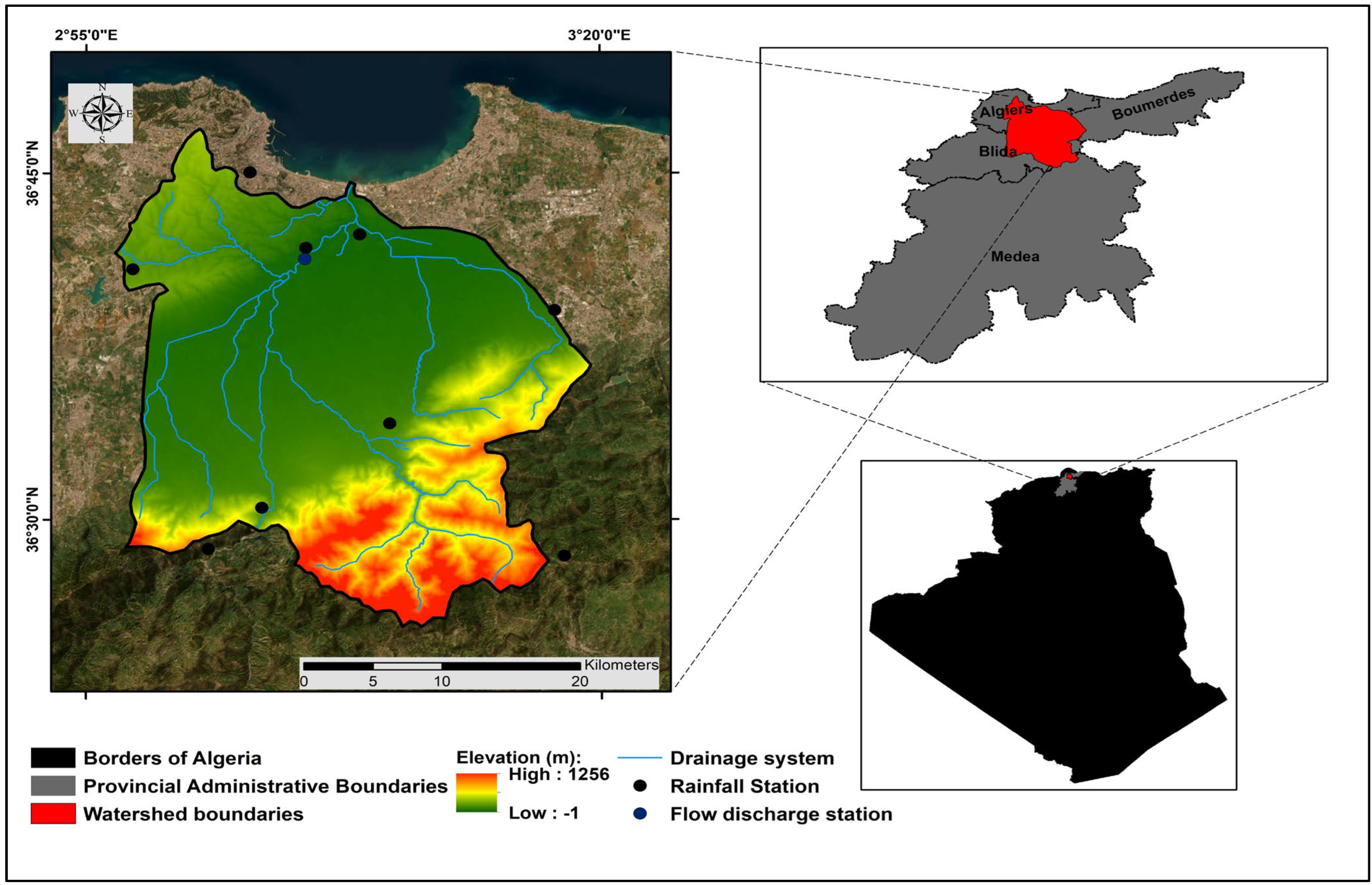



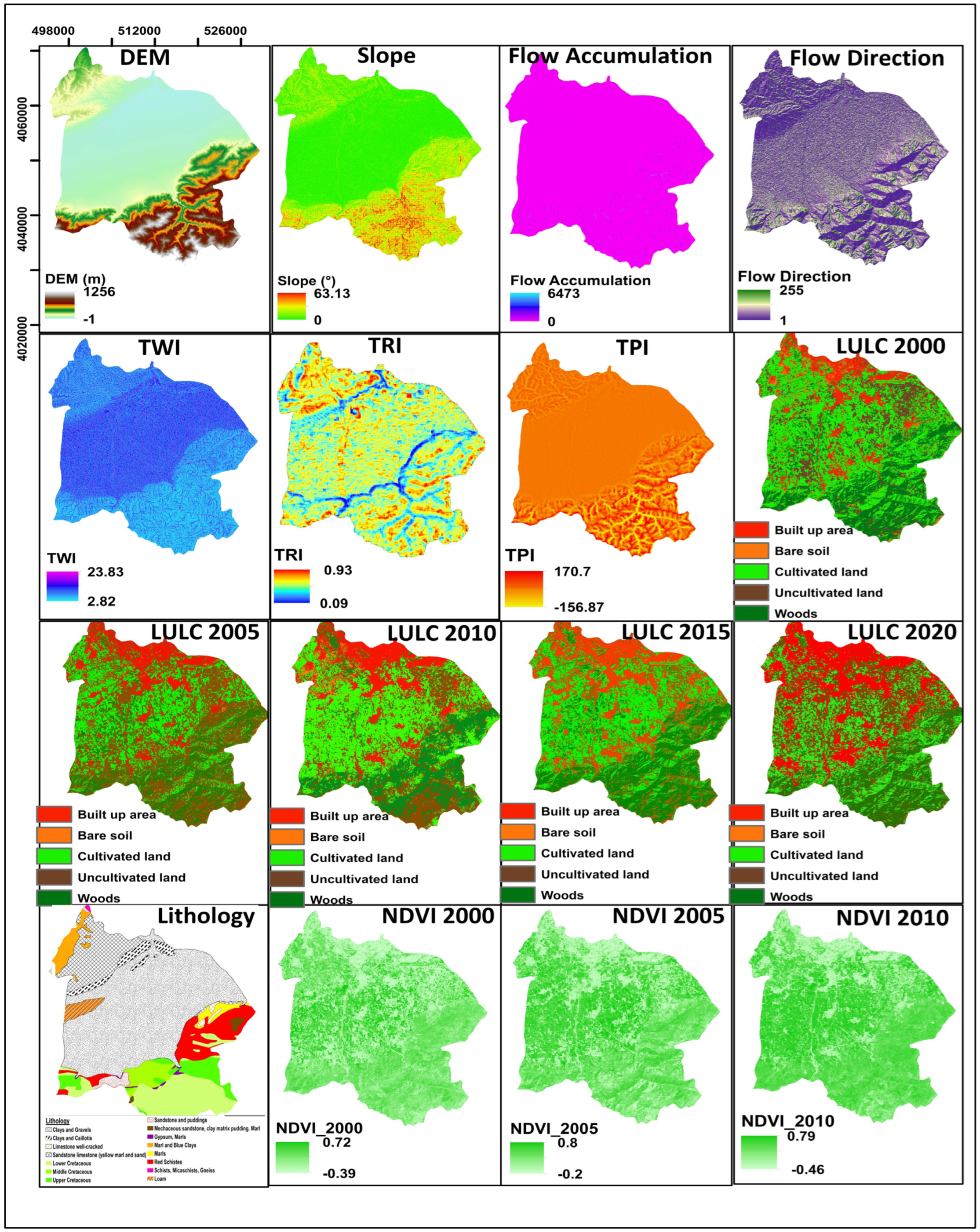
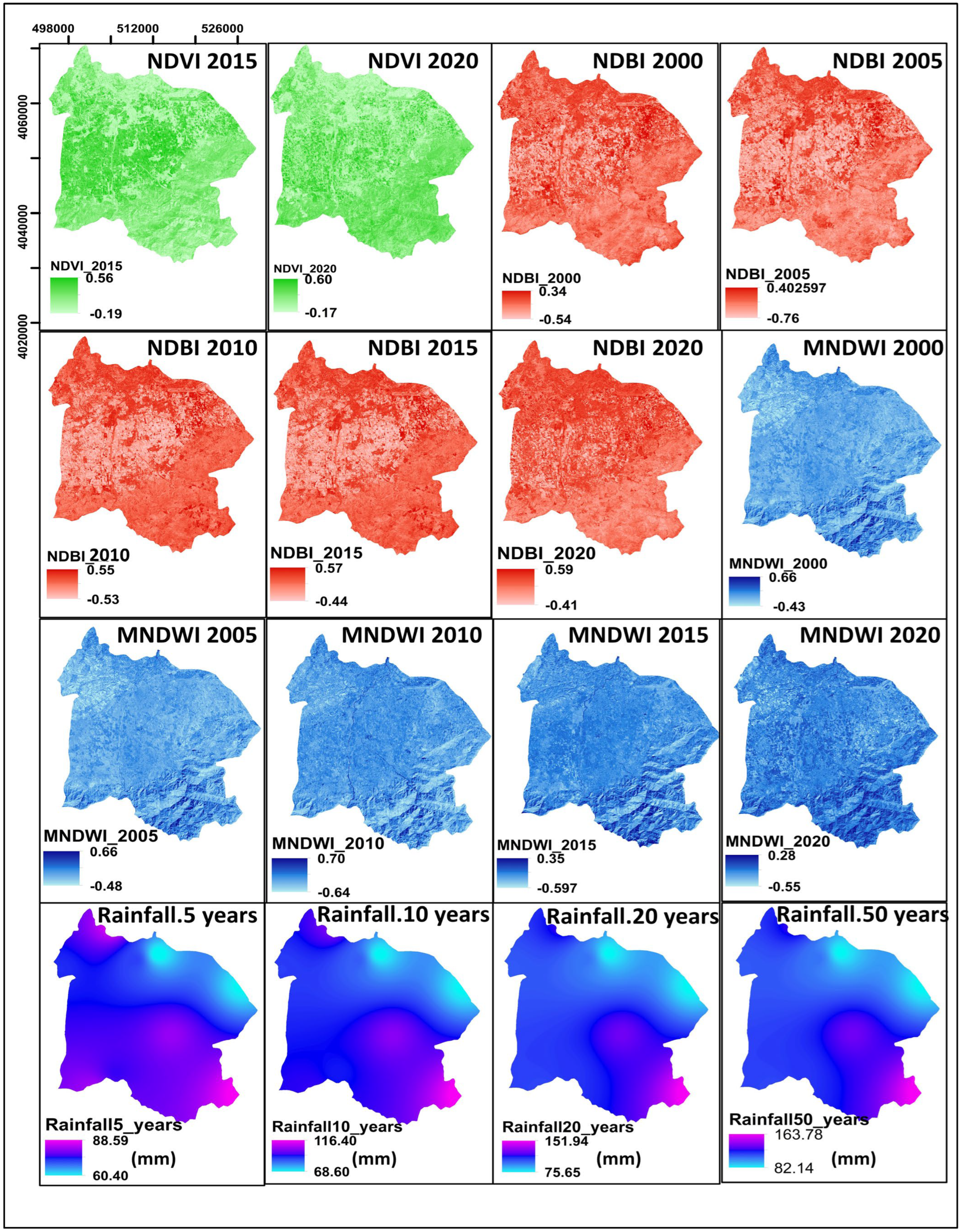
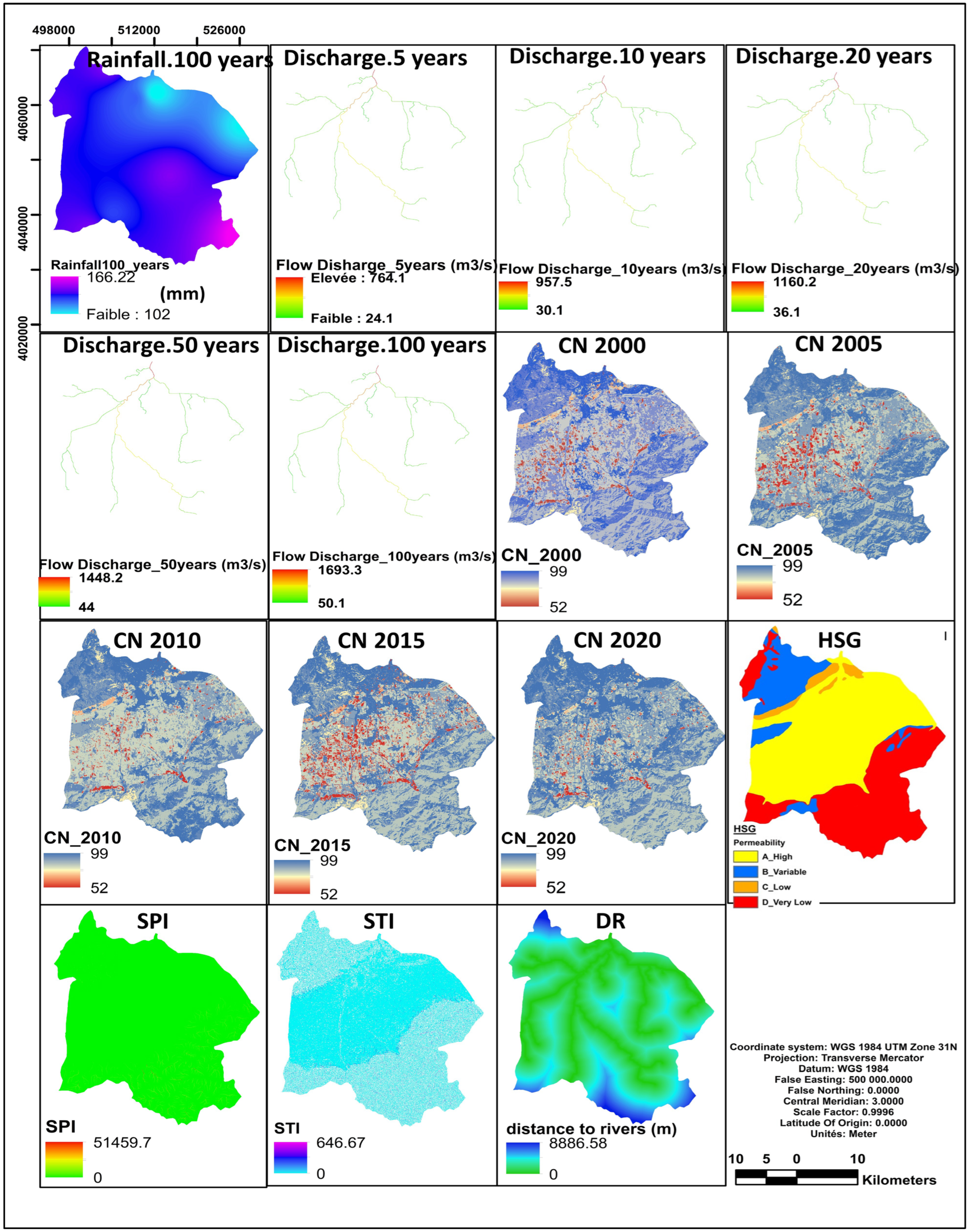
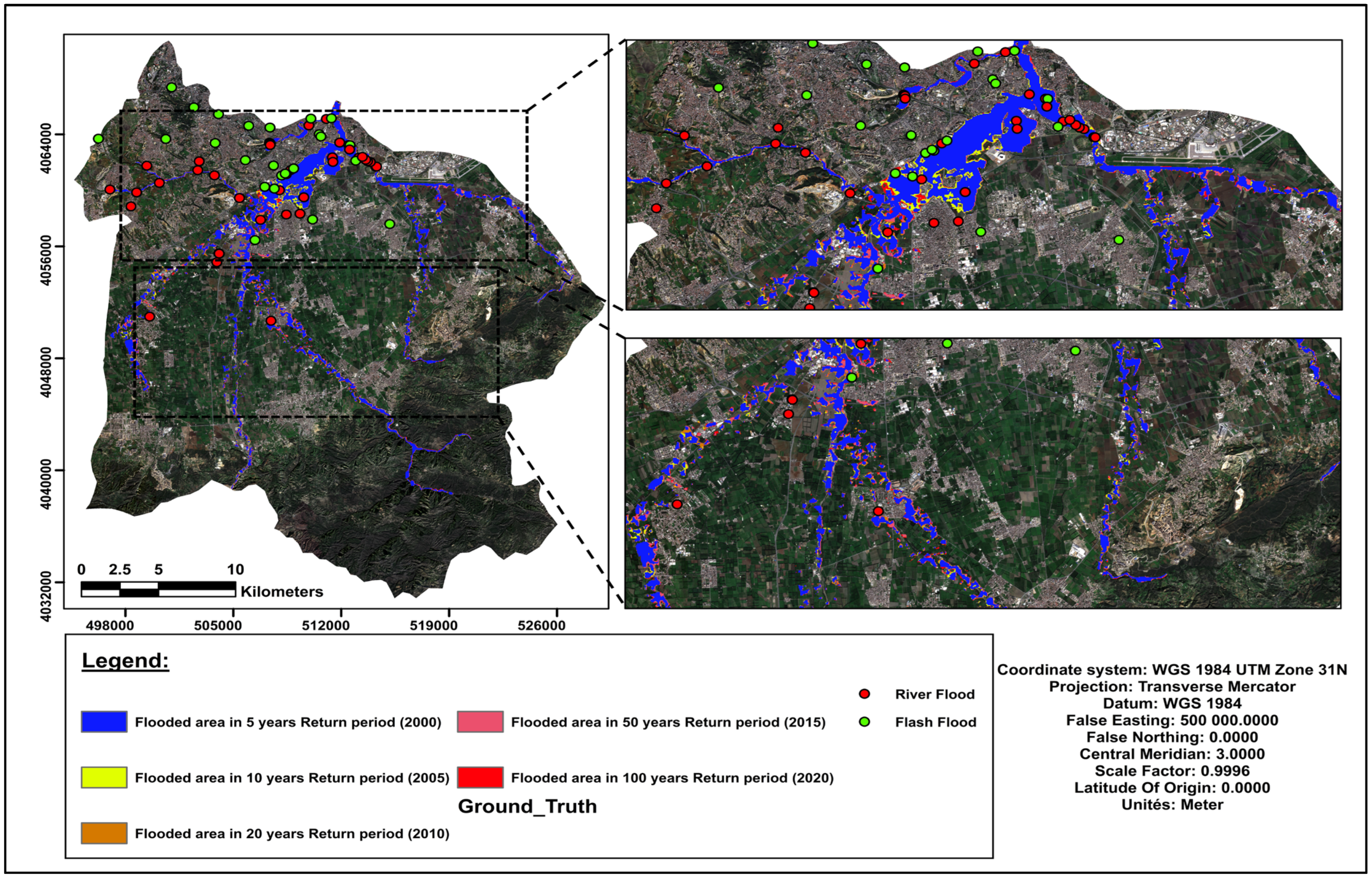
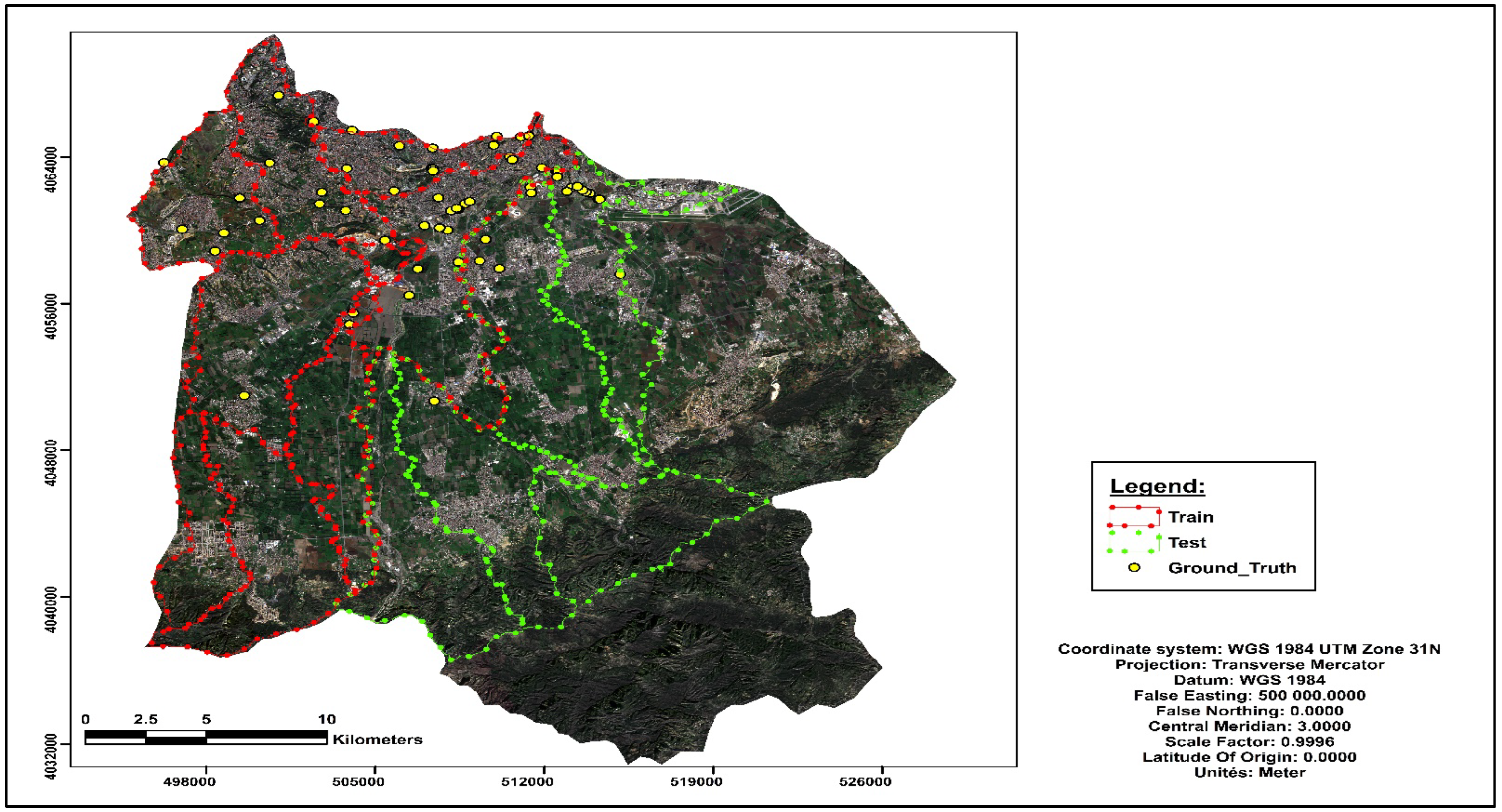

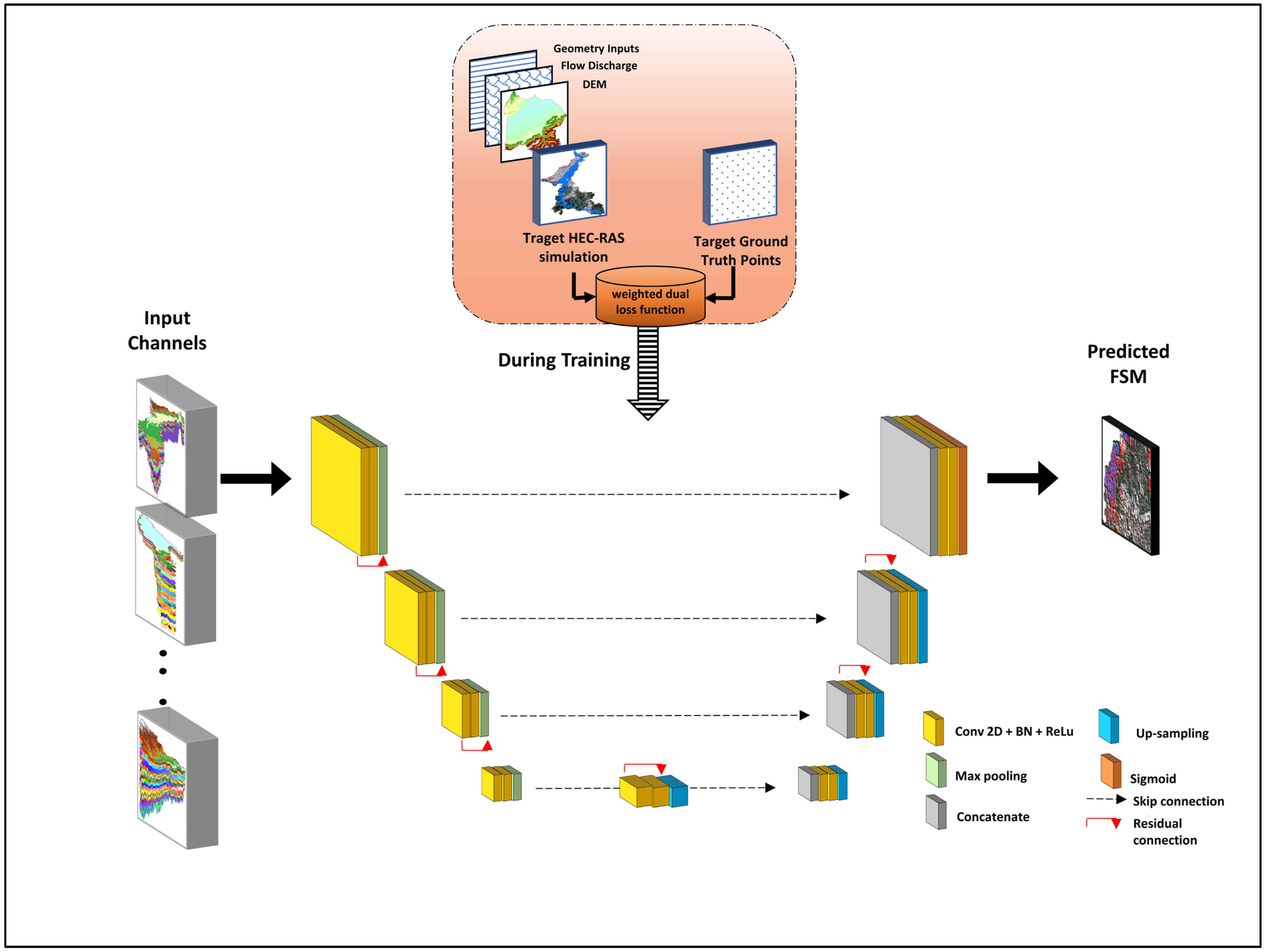

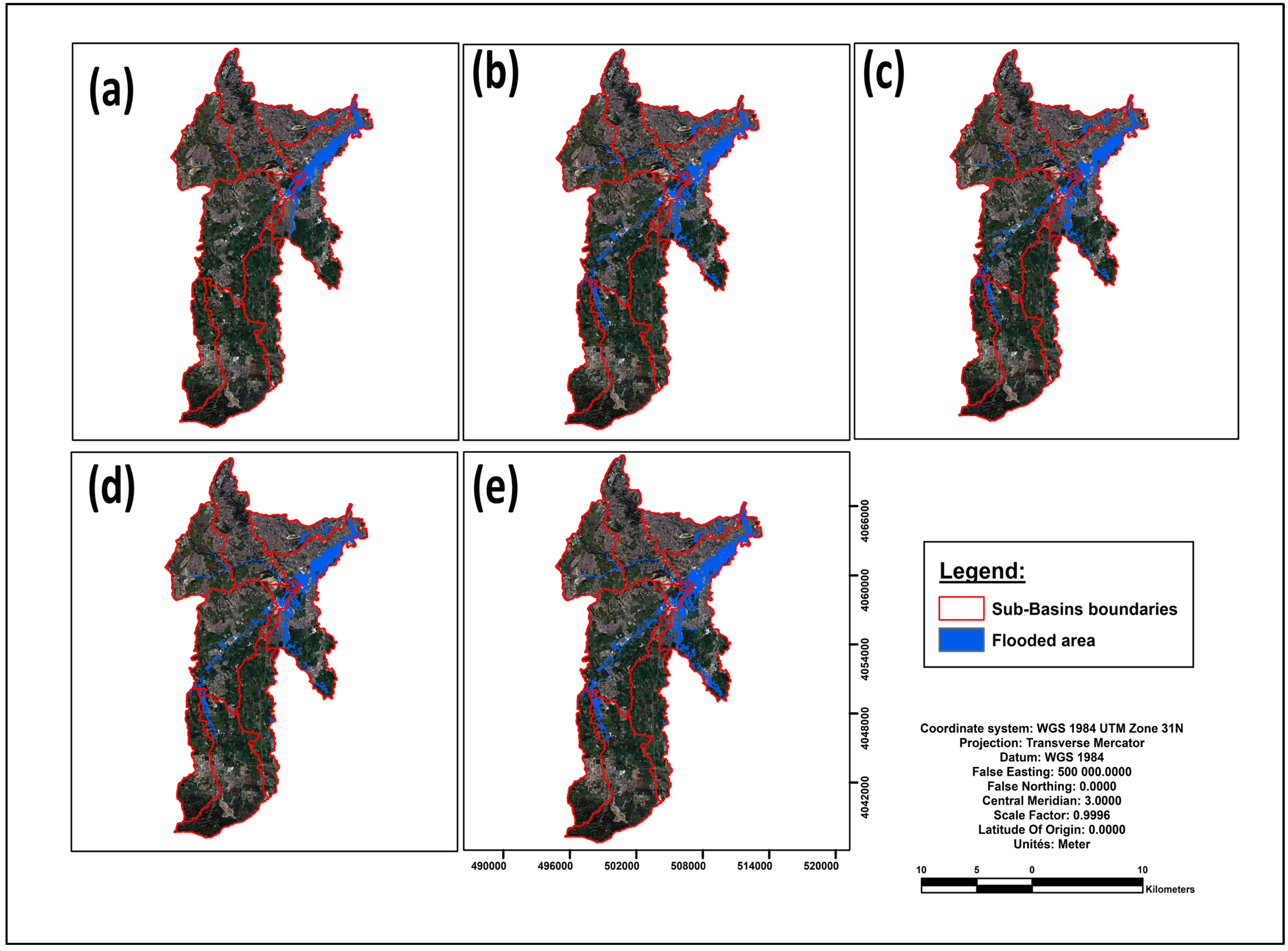
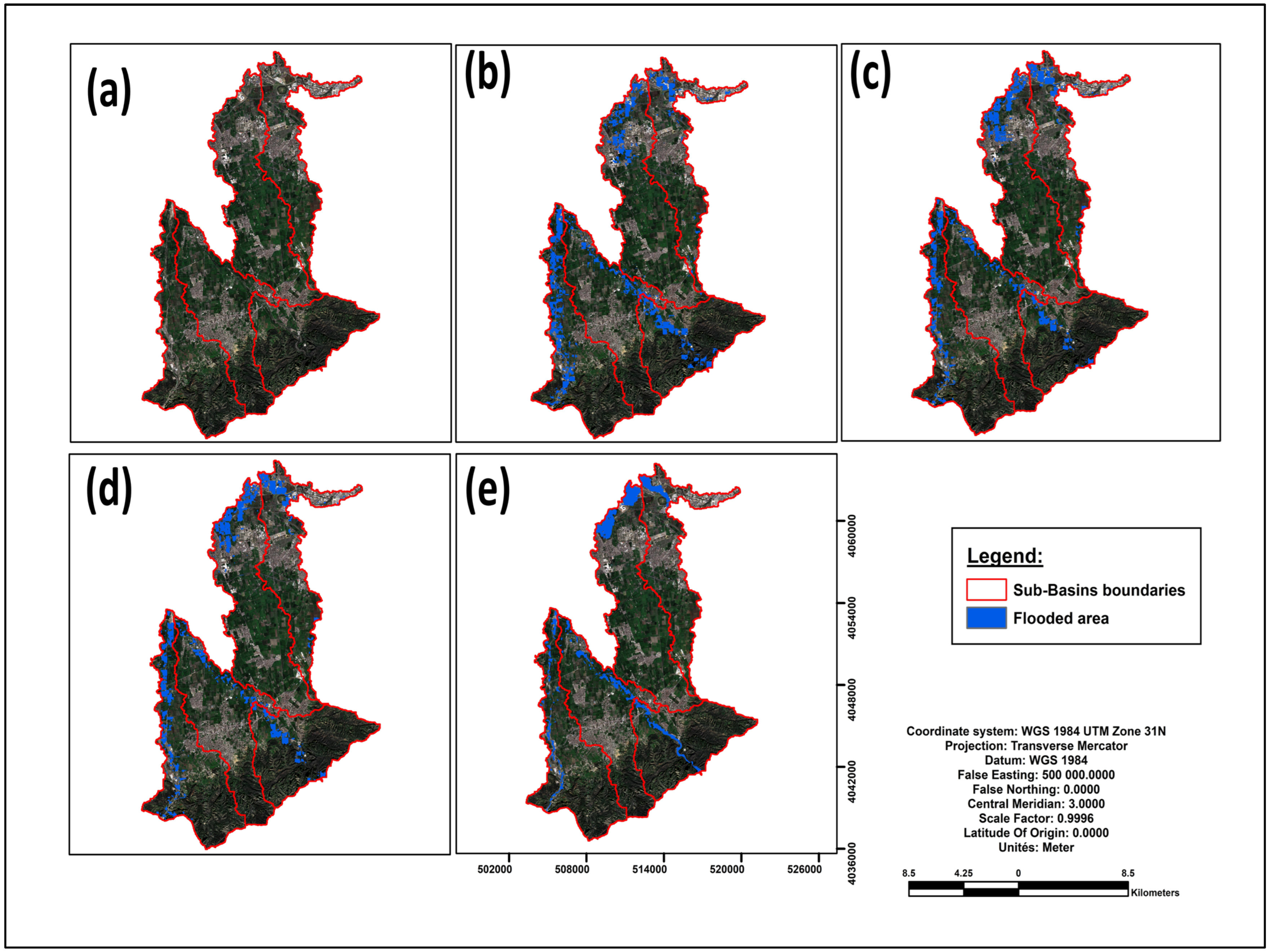
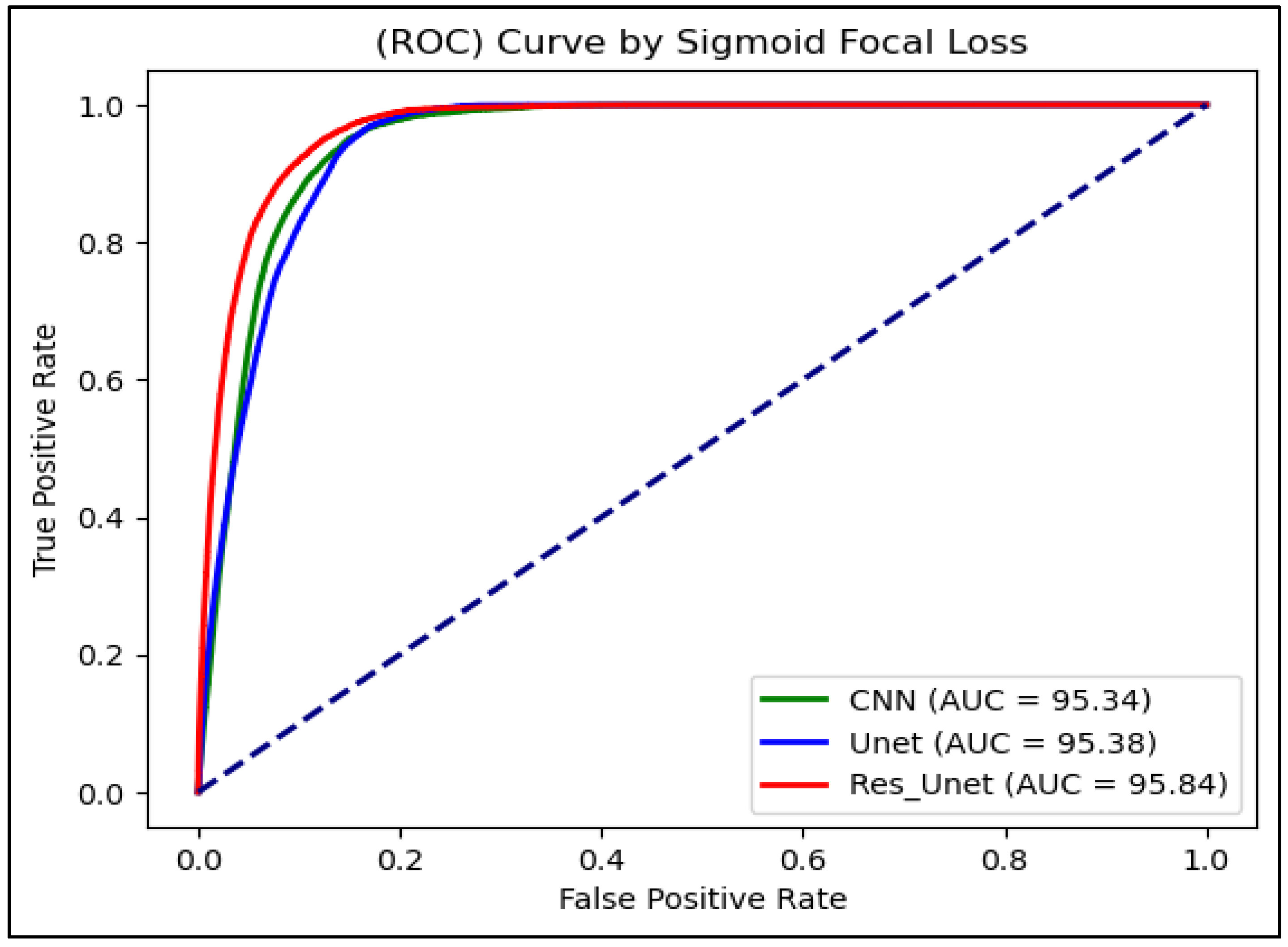
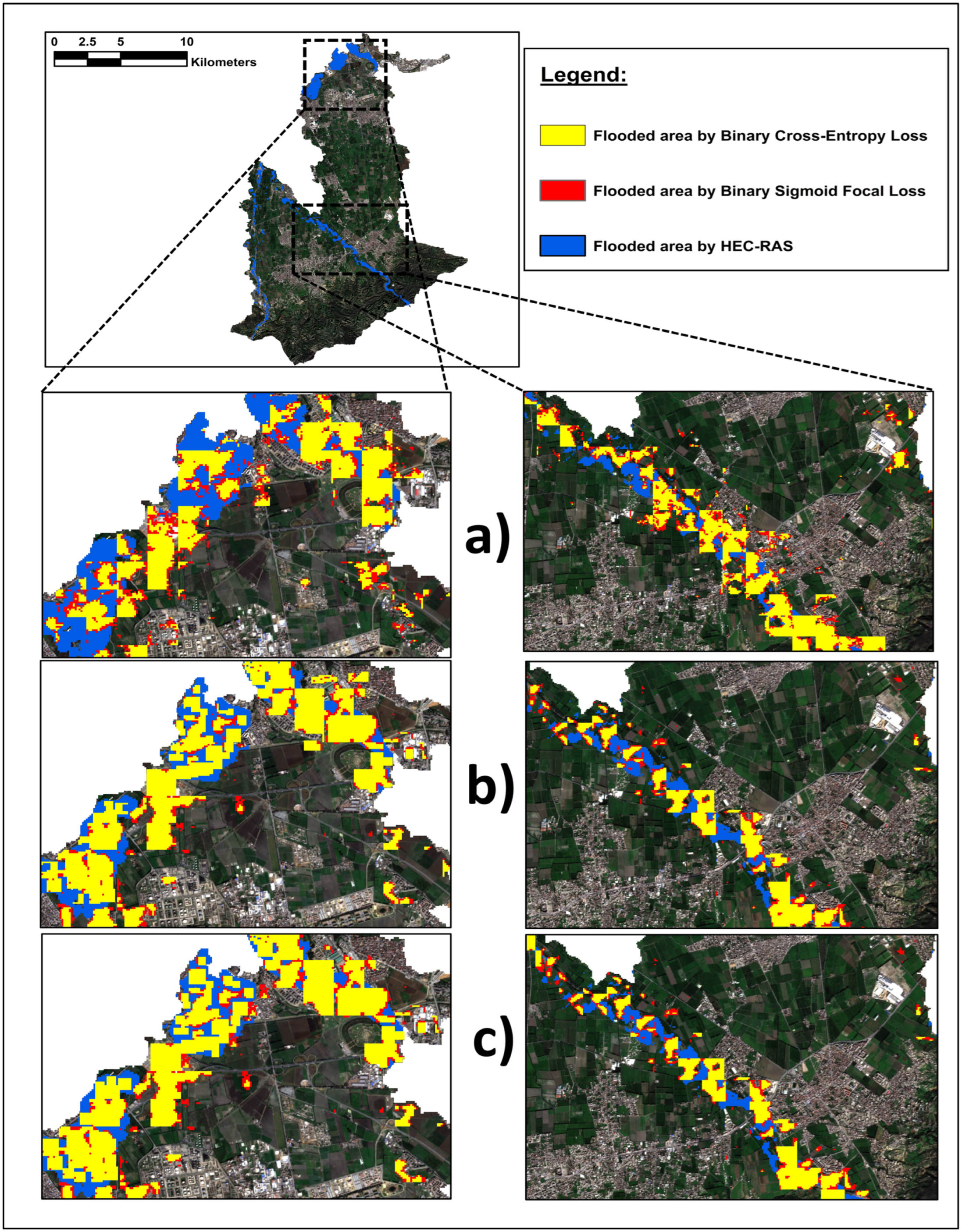

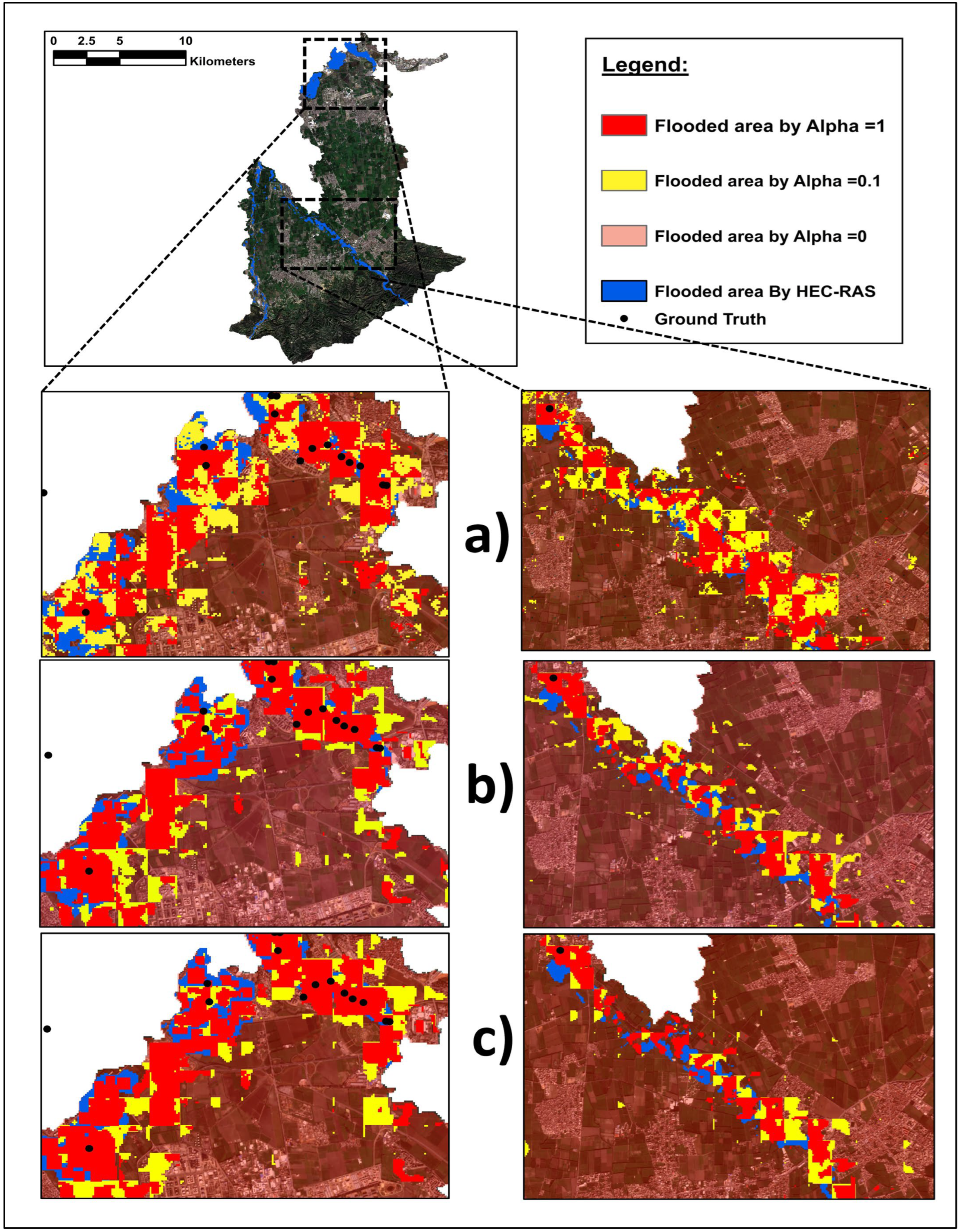

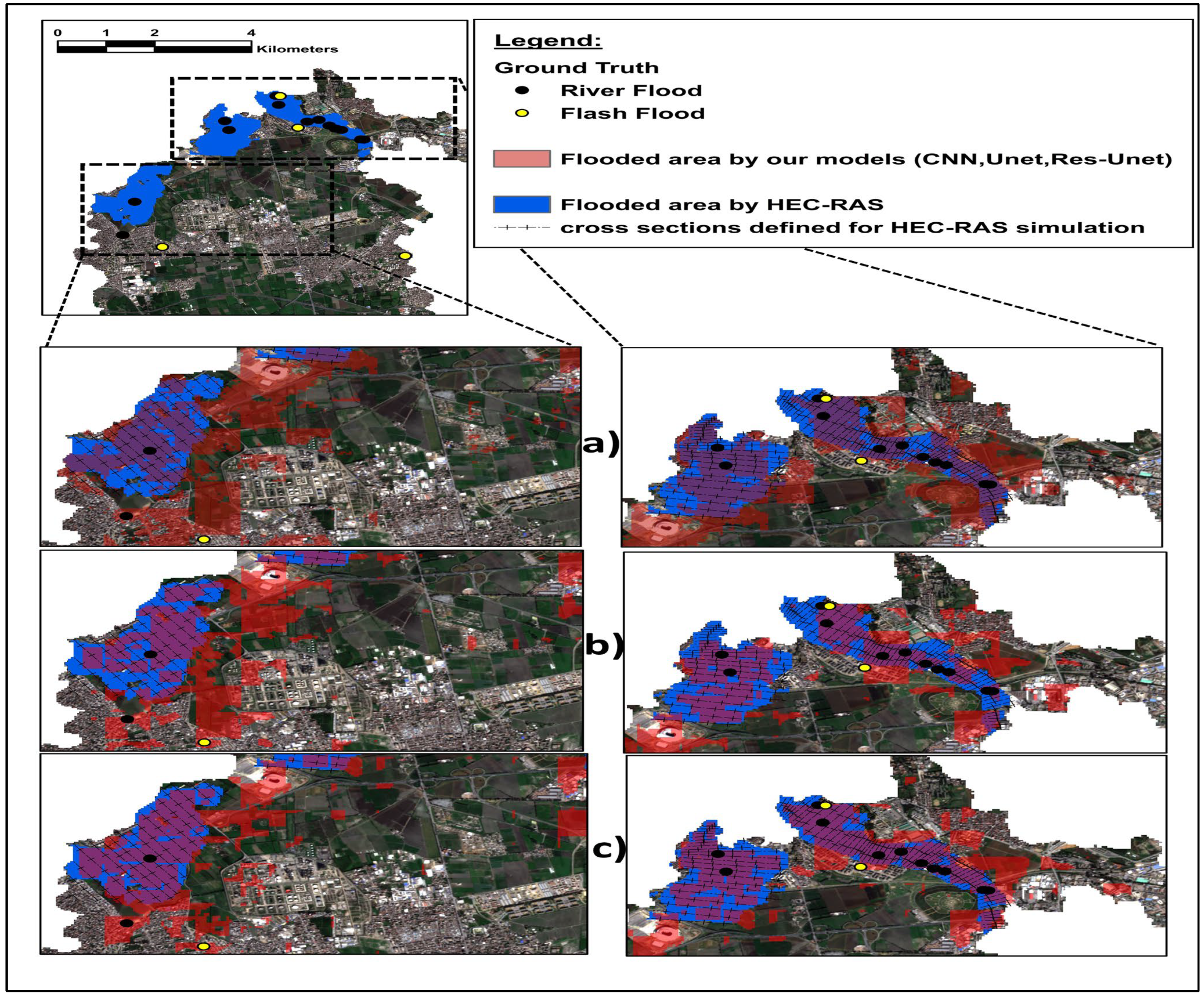
| Method | Reference | Model | Input | Location (Area) | Performance Metrics |
|---|---|---|---|---|---|
| Physics-Based Model | [15] | Physics-based Model HEC-RAS | * Topography (LIDAR) * LULC * Hydrological point data | New York, NY, USA | OA = 89.77% RMSE = 0.320 |
| [16] | Physics-based Model SWAT and LISFLOOD-FP | * DEM * LULC * Soil texture * Precipitation, temperature, solar radiation, relative humidity and wind speed | Ohio River Basin, OH, USA (500,000 km2) | F = 0.75 C = 0.85 | |
| [17] | Physics-based Model SWMM | * DEM * Rainfall Data | Hyderabad City, India (90.87 km2) | ||
| AHP and MCDA | [19] | GIS-AHP | *LULC * Elevation *lithology *Rainfall *Drainage density *slope *Soil *Ground water level | North-East of Tunisia (524.4 km2) | |
| [20] | MCDA | * Runoff * Elevation * Slope * Drainage Distance * Rainfall Intensity * Erosion * LULC | Mashhad Plain Basin, Iran (9762 km2) | ||
| [21] | GIS-MCDA | * Slope *Geology *Flow accumulation *LULC *Drainage density *Elevation *stream order *Soil. | Dodoma Region, Tanzania (41.05 km2) | AUC = 87.24% | |
| [22] | MCDA | * Rainfall *Distance from rivers *Slope *Soil type *Geology *Land use *Elevation *Drainage density. | Babolroud Watershed, Iran (2344 km2) | AUC = 90.5% | |
| Statistical Models | [23] | Integrated bivariate–multivariate statistical models | *Curvature *DEM *Geology *Greenfarm *Rainfall * River * Slope *Soil drain * Soil effect *Soil texture *SPI *Timber age *Timber density *Timber diameter *Timber type | Busan, Republic of Korea | AUC = 82.3 |
| [24] | Bivariate–multivariate statistical models | *Slope *Elevation *curvature *geological units * Land use *Soil drain *Distance from streams | Jeddah City, Saudi Arabia (219 km2) | AUC = 90.4% | |
| [25] | Bivariate models | *Slope angle *plan curvature *altitude * TWI * SPI *Distance from river *Rainfall *Geology* Land use *NDVI | Haraz Watershed (4015 km2) | AUC = 98.72% | |
| [26] | Bivariate Statistics-ML Models | *Plan curvature *Slope angle *Hydrological *Soil Group *Lithology *Land use *Convergence index *Elevation *Distance from river *Rainfall *TWI | Basin of Prahova River, Romania (2600 km2) | AUC = 91.1% | |
| [27] | DEMATEL-ANP | *Elevation *Curve number * SPI*Slope *Stream density *TRI*Distance from river *STI *TWI *Rainfall *Lithology *Soil texture * NDVI * Land cover | Topľa River Basin, Slovakia (1548 km2) | AUC = 97.5% | |
| Remote Sensing | [7] | TRS_LM_RGA on VV Polarization TRS_KI_THR on VH Polarization | * Sentinel 1 SAR * Landsat 8 OLI/TIRS for Validation | Jialing River, China | VV OA = 98.82% VH OA = 98.59% |
| [28] | Difference image index (DII) | * Sentinel-1 * Sentinel-2 and Landsat 8 imagery for validation | U.S. New Orleans (2500 km2) and Hurricane Harvey (7500 km2) | agreement percentages = 80% in the both area | |
| [29] | MNDWI | * Sentinel-2 | Basin of Mersin, Turkey (24,940 hectares) | ||
| [30] | SAR and Optical Earth Observation with Hydraulic Simulation | * Sentinel-1 * Landsat 7 * Landsat 8 * HEC-RAS modelling for comparison | Sperchios River basin, Greece (1823 km2) | ||
| [31] | Fusion Sentinel-1 and Sentinel-2 | * Sentinel-1 * Sentinel-2 | Ordu Province, Northern of Turkey | ||
| Machine Learning | [32] | Naive Bayes Tree (NBT) | * Slope *Curvature *Altitude * Distance from the river *NDVI map *Lithology *Land use *Soil type *Rainfall *TWI *SPI *STI | Southeast Jiangxi Province, China (4053.16 km2) | OA = 96.8% AUC = 0.97 Kappa = 0.95 RMSE = 0.115 MAE = 0.12 |
| [33] | Ensemble AHP-ANP_RF-SVM | * Elevation *Slope *Aspect *NDVI *TWI *SPI *Geology, *Land cover *Distance to drainage *distance to roads *Rainfall | Salzburg, Austria (7156.03 km2) | AUC = 89.3% | |
| [34] | hybrid model (Dagging models) | *Elevation *Curvature *Aspect and slope *topographic roughness index *topographic wetness index *Stream power index *Stream transport index *land use, land cover *Distance to river *soil types *Rainfall | Teesta Sub-Catchment, Bangladesh | AUC = 0.873 RMSE = 0.189 MAE = 0.084 R2 = 0.852 | |
| [35] | XGBoost | * Rainfall * CN * Elevation * Slope * Distance from stream * Evapotranspiration * LST * NDVI | Telangana State, India | AUC = 0.83 | |
| [36] | AB-RF | *Elevation *Aspect *Slope * TRI *TWI *SPI *Distance from rivers *Rainfall *NDVI *soil *geomorphology * Lithology | West Coast of India (3177 km2) | AUC = 0.940 | |
| [3] | RF | *Slope * Slope aspect * Profile curvature * Planar curvature * TP I* TRI * TWT * DTR * Flow accumulation * SPI * STI * Stream order * NDVI * NDISI * RDPI | Xinluo Sub-Watershed, China (600 km2) | AUC = 91.2% | |
| [37] | Cascade Forest Model (CFM) | * Soil type * LCLU * NDVI * DEM * Slope * Aspect * Curvature * SCS * LC, ci * VD * LS * FA* TRI * TPI * MCA * SPI * TWI * HOFD * VOFD | Gorganrud (11,290 km2) and Karun Basin (67,297 km2), Iran | Karun basin: OA = 93.94% F1-Score = 90.70% Gorganrud: OA = 92.40% F1-Score = 91.60% | |
| [38] | RF | *Elvation *Soil *TPI *CI *LS *TWI * PrC *PlC *DD *GEO *NDVI *LULC *DTR *DTW *Rainfall | El-Matulla Catchment, Egypt (7231 km2) | AUC = 0.93 OA = 0.88 Kappa = 0.85 RMSE = 0.34 MAE = 0.12 | |
| [39] | RF | *Elevation *Slope *Aspect *Plan curvature *hillshade *Flow accumulation *TWI *STI *Horizontal flowdistance *Vertical flow distance *Rainfall *Flow distance *LU/land cover *lithology *NDVI. | Hurghada, Egypt (138 km2) | AUC = 98.2% | |
| [40] | Stochastic Gradient Boosting (SGB) and GBC | *Elevation *Slope *Aspect *STI * TRI *TWI *SPI *Curvature * D2R*D2S *Geology *Geomorphology * LULC *Soil *NDVI *Rain | Idukki District, South India (4358 km2) | AUC = 0.92 | |
| Deep Learning | [41] | DLNN | *Elevation *Slope *Aspect *curvature *stream density *NDVI *Soil type* Lithology *Rainfall | Lao Cai Province, Vietnam (1465.07 km2) | SEN = 90.04% SPE = 94.26% AUC = 0.960 |
| [42] | Social Spider Optimization (SSO) | *DEM* Slope *Aspect * Curvature * TWI * SPI * DTR * River density * NDVI * NDBI * Rainfall | Lai Chau Province, Vietnam | AUC = 97.003% MAE = 0.033 OA = 95.926% | |
| [43] | Autoencoder-MLP | *Slope * Aspect * Altitude * Plan curvature * TWI * Lithology * Rainfall * Land use * Distance to drainage | Golestan Province, Iran (12,050 km2) and Ganga Basins, India | AUC = 0.974 | |
| [44] | Deep-belief network, back propagation, and genetic algorithm (DBPGA) | *Slope angle *elevation *Curvature *TWI *SPI * Distance to river * River density *rainfall *Lithology * Land use *NDVI | Haraz Watershed, Iran (4014 km2) | AUC = 0.985 | |
| [45] | Iterative Classifier Optimizer—Deep Learning Neural Network—Frequency Ratio (ICO-DLNN-FR) | * Lithology* Slope angle *Profile curvature *Hydrological Soil Groups * TWI *Land use *Convergence Index * Elevation* Distance from river *Plan curvature *Rainfall *Aspect * SPI *TPI | Putna River Basin, Romania (2509 km2) | AUC = 0.911 | |
| [46] | CNN | *Elevation* Aspect *Distance from river *LULC *TWI * Slope *TRI *TPI * Soil type *NDVI *Geomorphology *rainfall intensity *CN *SPI * Convergence index *CI *Geology | Kunur River, India (646 km2) | AUC = 0.931 MAE = 0.143 RMSE = 0.378 | |
| [47] | CNN versus GMDH | *Aspect * Slope *Altitude *Plan curvature *TWI *Profile curvature *valley depth LS- *factor or slope lengths *Land use *Distance of the river | Coastal City of Beira Central Mozambique | AUC CNN = 0.90 AUC GMDH = 0.87 | |
| [48] | Filtered Classifier–Deep learning (FC-DL) | *Altitude *Slope angle *aspect *TWI *SPI *STI *Distance to rivers * Rainfall *NDVI *Land use | Jiangxi Province of China | AUC = 0.963 | |
| [49] | DLNN-ICO | *Aspect *Elevation *Slope angle*Curvature *Plan curvature *Profile curvature *flow direction *Flow accumulation *LULC *NDVI *Distance to the rivers * Soil *Mean annual rainfall * river density *SPI*TWI *STI *Geology | Padma River, Bangladesh (2562 km2) | AUC = 0.917 | |
| [50] | 2D-CNN | *Rainfall * LULC *Altitude *Slope *Flow direction *Flow accumulation *SPI *TWI *DTR*Soils | Eldoret Municipality, Kenya (247.7 km2) | OA = 82.5% AUC = 0.809 |
| Period Training | Model | Test on 2000 (%) | Test on 2005 (%) | Test on 2010 (%) | Test on 2015 (%) | Test on 2020 (%) | |||||||||||||||
|---|---|---|---|---|---|---|---|---|---|---|---|---|---|---|---|---|---|---|---|---|---|
| Acc | Spe | Sen | AUC | Acc | Spe | Sen | AUC | Acc | Spe | Sen | AUC | Acc | Spe | Sen | AUC | Acc | Spe | Sen | AUC | ||
| Train on 2000 | RF | 96.26 | 97.31 | 50.14 | 73.12 | 96.08 | 96.82 | 49.64 | 72.38 | 95.82 | 96.64 | 49.14 | 71.42 | 96.48 | 96.3 | 48.64 | 70.92 | 96.32 | 94.12 | 48.34 | 70.56 |
| CNN | 96.52 | 97.06 | 92.37 | 97.53 | 96.35 | 96.56 | 91.37 | 96.57 | 96.21 | 96.38 | 90.75 | 95.68 | 96.21 | 90.38 | 95.42 | 96.36 | 96.13 | 90 | 95.16 | 94.74 | |
| U-net | 97.31 | 97.32 | 92.12 | 97.21 | 97.1 | 96.98 | 91.21 | 96.23 | 96.85 | 96.36 | 90.11 | 95.75 | 96.24 | 89.88 | 95.53 | 96.53 | 95.99 | 89.42 | 95.2 | 94.85 | |
| Res-Unet | 97 | 97.86 | 92.23 | 97.47 | 96.85 | 97.67 | 91.09 | 96.89 | 96.23 | 97.51 | 90.56 | 95.29 | 97.31 | 90.12 | 95.04 | 96.14 | 97.14 | 89.68 | 94.85 | 94.69 | |
| Train from 2000 to 2005 | RF | 96.42 | 97.46 | 51.35 | 73.89 | 96.29 | 96.99 | 50.35 | 73.29 | 95.98 | 96.25 | 49.85 | 72.59 | 96.09 | 96.45 | 49.37 | 71.75 | 95.92 | 94.89 | 49.08 | 71.4 |
| CNN | 96.62 | 98.23 | 93.62 | 97.62 | 96.46 | 97.75 | 92.82 | 97 | 96.25 | 97.53 | 91.92 | 96.22 | 97.34 | 91.46 | 95.88 | 95.41 | 97.14 | 91.02 | 95.46 | 95.13 | |
| U-net | 97.15 | 98.64 | 93.47 | 97.41 | 96.78 | 97.46 | 92.22 | 96.75 | 96.65 | 97.25 | 91.09 | 95.99 | 96.98 | 91 | 95.62 | 95.23 | 96.84 | 90.56 | 95.24 | 94.97 | |
| Res-Unet | 97.23 | 98.82 | 93.59 | 97.59 | 97.03 | 97.68 | 92.26 | 96.91 | 96.81 | 97.13 | 91.28 | 96.15 | 96.89 | 90.96 | 95.68 | 95.36 | 96.66 | 90.42 | 95.36 | 94.89 | |
| Train from 2000 to 2010 | RF | 97.02 | 97.87 | 51.98 | 74.08 | 96.47 | 96.68 | 50.43 | 73.52 | 96.21 | 96.42 | 49.82 | 72.24 | 96.2 | 97.13 | 49.45 | 71.34 | 96.01 | 95.06 | 49.08 | 71.02 |
| CNN | 97.14 | 98.15 | 93.86 | 97.7 | 96.58 | 97.33 | 93.31 | 96.99 | 96.31 | 96.93 | 92.02 | 95.77 | 96.63 | 91.77 | 95.44 | 95.04 | 96.53 | 91.35 | 95.18 | 95.16 | |
| U-net | 97.53 | 98.76 | 94.12 | 97.84 | 97.04 | 97.57 | 93.22 | 96.89 | 96.57 | 96.94 | 92.11 | 95.88 | 96.85 | 91.88 | 95.56 | 95.26 | 96.64 | 91.46 | 95.3 | 95.38 | |
| Res-Unet | 97.67 | 98.8 | 95.19 | 97.94 | 96.99 | 97.38 | 93.14 | 96.95 | 96.66 | 96.8 | 91.95 | 95.99 | 96.72 | 91.79 | 95.49 | 95.23 | 96.51 | 91.32 | 95.24 | 95.29 | |
| Train from 2000 to 2015 | RF | 97.29 | 98.12 | 56.19 | 74.81 | 96.57 | 97.17 | 55.19 | 74.16 | 96.34 | 96.85 | 54.19 | 73.06 | 96.58 | 97.41 | 53.64 | 72.16 | 96.38 | 95.87 | 53.22 | 71.84 |
| CNN | 97.39 | 98.37 | 94.89 | 97.82 | 96.8 | 97.89 | 94.39 | 97.45 | 96.52 | 97.68 | 93.39 | 96.17 | 97.55 | 92.05 | 95.66 | 95.32 | 97.43 | 91.65 | 95.34 | 95.22 | |
| U-net | 97.67 | 98.82 | 96.32 | 98.11 | 96.99 | 97.69 | 95.32 | 97.22 | 96.66 | 97.29 | 94.22 | 96.52 | 97.09 | 92.72 | 95.91 | 95.64 | 97.02 | 92.18 | 95.58 | 95.62 | |
| Res-Unet | 97.81 | 98.91 | 97.04 | 98.23 | 97.12 | 97.68 | 96.02 | 97.36 | 96.78 | 97.19 | 94.56 | 96.65 | 97.02 | 92.88 | 95.84 | 95.58 | 96.97 | 92.32 | 95.69 | 95.81 | |
| Train from 2000 to 2020 | RF | 97.48 | 98.32 | 58.42 | 75.26 | 97.25 | 97.69 | 57.42 | 74.57 | 96.89 | 97.09 | 56.42 | 73.32 | 96.98 | 97.87 | 55.32 | 72.48 | 96.88 | 96.15 | 55.02 | 72.16 |
| CNN | 97.54 | 98.48 | 95.04 | 97.93 | 97.28 | 97.99 | 94.55 | 97.63 | 97.04 | 97.64 | 93.22 | 96.54 | 97.45 | 92.32 | 95.78 | 96.04 | 97.35 | 91.72 | 95.62 | 95.41 | |
| U-net | 97.84 | 98.95 | 96.51 | 98.41 | 97.6 | 98.32 | 95.91 | 97.98 | 97.3 | 97.94 | 94.51 | 96.89 | 97.73 | 92.81 | 96.12 | 96.37 | 97.6 | 92.48 | 95.98 | 95.78 | |
| Res-Unet | 97.91 | 97.78 | 97.76 | 98.56 | 97.64 | 98.51 | 96.24 | 98.17 | 97.46 | 98.12 | 95.24 | 97.07 | 97.99 | 93.14 | 96.29 | 96.89 | 97.87 | 92.72 | 96.08 | 95.96 | |
| Period Training | Model | Test on 2000 (%) | Test on 2005 (%) | Test on 2010 (%) | Test on 2015 (%) | Test on 2020 (%) | |||||||||||||||
|---|---|---|---|---|---|---|---|---|---|---|---|---|---|---|---|---|---|---|---|---|---|
| Acc | Spe | Sen | AUC | Acc | Spe | Sen | AUC | Acc | Spe | Sen | AUC | Acc | Spe | Sen | AUC | Acc | Spe | Sen | AUC | ||
| Train on 2000 | RF | 97.96 | 100 | 0 | 50 | 97.96 | 100 | 0 | 50 | 97.96 | 100 | 0 | 50 | 97.96 | 100 | 0 | 50 | 97.96 | 100 | 0 | 50 |
| CNN | 96.84 | 95.6 | 62.71 | 95.69 | 97.63 | 95.89 | 62.12 | 95.42 | 97.02 | 97.12 | 61.29 | 95.96 | 96.9 | 95.22 | 61.14 | 95.76 | 97.03 | 96.13 | 60.24 | 95.74 | |
| U-net | 97.08 | 96.16 | 62.47 | 95.62 | 96.91 | 95.71 | 61.87 | 95.22 | 97.5 | 97.98 | 60.92 | 95.23 | 97.04 | 97.08 | 60.89 | 95.27 | 96.96 | 96.73 | 60.21 | 95.19 | |
| Res-Unet | 97 | 96.02 | 62.61 | 96.64 | 95.62 | 95.57 | 61.92 | 95.36 | 97.12 | 97.8 | 61.14 | 95.42 | 96.98 | 97.02 | 60.95 | 95.31 | 96.69 | 96.58 | 60.23 | 95.01 | |
| Train from 2000 to 2005 | RF | 97.96 | 100 | 0 | 50 | 97.96 | 100 | 0 | 50 | 97.96 | 100 | 0 | 50 | 97.96 | 100 | 0 | 50 | 97.96 | 100 | 0 | 50 |
| CNN | 96.51 | 95.41 | 63.52 | 95.62 | 97.51 | 96.05 | 62.21 | 96.01 | 96.23 | 96.96 | 61.57 | 95.35 | 95.08 | 95.42 | 61.21 | 95.74 | 96.27 | 95.63 | 60.97 | 94.86 | |
| U-net | 96.81 | 95.85 | 63.17 | 95.47 | 96.87 | 96.13 | 61.90 | 95.69 | 97.78 | 97.96 | 61.13 | 94.89 | 96.75 | 97.15 | 61.01 | 95.51 | 97.25 | 96.87 | 60.54 | 94.54 | |
| Res-Unet | 96.74 | 96.31 | 63.44 | 96.54 | 95.54 | 96.21 | 62.11 | 95.74 | 97.56 | 97.91 | 61.25 | 94.97 | 96.67 | 97.11 | 61.13 | 95.59 | 96.98 | 96.93 | 60.72 | 94.62 | |
| Train from 2000 to 2010 | RF | 97.96 | 100 | 0 | 50 | 97.96 | 100 | 0 | 50 | 97.96 | 100 | 0 | 50 | 97.96 | 100 | 0 | 50 | 97.96 | 100 | 0 | 50 |
| CNN | 96.87 | 95.79 | 63.72 | 95.73 | 97.42 | 96.12 | 63.17 | 96.62 | 94.69 | 95.82 | 61.84 | 95.81 | 94.61 | 95.37 | 61.61 | 94.98 | 94.31 | 95.13 | 61.26 | 94.65 | |
| U-net | 97.01 | 96.12 | 64.87 | 95.96 | 96.82 | 96.21 | 64.01 | 97.16 | 96.51 | 97.71 | 65.85 | 96.13 | 96.24 | 97.02 | 65.89 | 95.96 | 96.05 | 96.63 | 65.04 | 95.87 | |
| Res-Unet | 97.15 | 96.96 | 65.19 | 96.26 | 95.92 | 96.38 | 64.17 | 97.87 | 96.63 | 97.23 | 66.87 | 96.41 | 96.23 | 97.05 | 67.19 | 96.68 | 96.11 | 96.59 | 66.89 | 96.7 | |
| Train from 2000 to 2015 | RF | 97.96 | 100 | 0 | 50 | 97.96 | 100 | 0 | 50 | 97.96 | 100 | 0 | 50 | 97.96 | 100 | 0 | 50 | 97.96 | 100 | 0 | 50 |
| CNN | 97.27 | 96.12 | 64.12 | 96.82 | 97.12 | 96.8 | 63.29 | 96.42 | 94.87 | 95.77 | 62 | 96.14 | 94.74 | 95.56 | 61.87 | 95.17 | 94.63 | 95.32 | 61.49 | 94.97 | |
| U-net | 97.51 | 97.42 | 66.52 | 96.14 | 96.86 | 96.73 | 63.78 | 96.97 | 96.86 | 97.25 | 66.12 | 96.17 | 96.51 | 97.11 | 66.07 | 96.21 | 96.21 | 96.85 | 65.27 | 96.06 | |
| Res-Unet | 97.58 | 97.61 | 67.04 | 96.87 | 96.74 | 96.05 | 64.93 | 98.09 | 97.01 | 97.07 | 67.73 | 96.98 | 96.44 | 97.15 | 67.53 | 96.89 | 96.33 | 96.94 | 67.02 | 96.7 | |
| Train from 2000 to 2020 | RF | 97.96 | 100 | 0 | 50 | 97.96 | 100 | 0 | 50 | 97.96 | 100 | 0 | 50 | 97.96 | 100 | 0 | 50 | 97.96 | 100 | 0 | 50 |
| CNN | 97.31 | 96.24 | 64.45 | 96.74 | 97.25 | 96.11 | 64.35 | 96.23 | 94.97 | 95.83 | 62.54 | 95.84 | 94.93 | 95.73 | 62.03 | 95.36 | 94.81 | 95.52 | 61.23 | 95.02 | |
| U-net | 97.64 | 97.63 | 66.9 | 97 | 97.59 | 97.45 | 66.86 | 96.89 | 97.1 | 97.34 | 66.28 | 96.52 | 96.87 | 97.23 | 66.96 | 96.39 | 96.78 | 97.01 | 65.29 | 95.23 | |
| Res-Unet | 97.69 | 97.78 | 67.97 | 97.98 | 97.62 | 97.58 | 67.81 | 97.95 | 97.32 | 97.42 | 67.74 | 97.12 | 96.61 | 97.29 | 67.54 | 97.02 | 96.52 | 97.24 | 67.36 | 95.67 | |
| Period Training | Model | Test in 2020 in Other Sub-Basins | |||
|---|---|---|---|---|---|
| Acc | Spe | Sen | AUC | ||
| From 2000 to 2020 | CNN | 95.09 (+0.28) | 95.73 (+0.21) | 61.46 (+0.23) | 95.34 (+0.32) |
| Unet | 96.92 (+0.14) | 97.42 (+0.41) | 65.39 (+0.10) | 95.38 (+0.15) | |
| Res-Unet | 97.07 (+0.55) | 97.69 (+0.45) | 67.63 (+0.27) | 95.84 (+0.17) | |
| Model | Alpha | Validation with HEC-RAS | Validation with Ground Truth | ||||||
|---|---|---|---|---|---|---|---|---|---|
| Acc | Spe | Sen | AUC | Acc | Spe | Sen | AUC | ||
| CNN | 0 | 54.46 | 53.52 | 99.45 | 75.59 | 52.44 | 52.44 | 100 | 71.12 |
| 0.1 | 95.03 | 95.81 | 57.55 | 95.32 | 94.72 | 94.72 | 66.67 | 94.91 | |
| 0.2 | 96.29 | 97.42 | 42.14 | 95.25 | 96.61 | 96.61 | 55.56 | 96.27 | |
| 0.3 | 96.23 | 97.47 | 36.72 | 95.08 | 96.77 | 96.77 | 44.44 | 94.28 | |
| 0.4 | 96.61 | 98 | 30.06 | 94.89 | 97.43 | 97.43 | 44.25 | 94.98 | |
| 0.5 | 96.66 | 98.09 | 28.17 | 94.88 | 97.55 | 97.56 | 50 | 95.04 | |
| 0.6 | 96.64 | 97.9 | 36.16 | 95.02 | 97.2 | 97.2 | 50 | 96.72 | |
| 0.7 | 97.08 | 98.47 | 30.36 | 95.87 | 97.88 | 97.88 | 38.89 | 96.22 | |
| 0.8 | 97 | 98.53 | 23.62 | 94.91 | 98.08 | 98.08 | 33.33 | 95.56 | |
| 0.9 | 96.84 | 98.14 | 34.27 | 95.35 | 97.48 | 97.48 | 38.89 | 94.25 | |
| 1 | 95.09 | 95.73 | 61.46 | 95.34 | 96.72 | 96.72 | 50 | 95.95 | |
| Unet | 0 | 54.29 | 53.34 | 99.89 | 77.5 | 52.26 | 52.26 | 100 | 74.35 |
| 0.1 | 92.72 | 93.31 | 64.41 | 93.28 | 92.14 | 92.14 | 83.33 | 95.06 | |
| 0.2 | 94.41 | 95.16 | 58.03 | 94.31 | 94.08 | 94.08 | 72.11 | 93.51 | |
| 0.3 | 93.31 | 93.96 | 62.08 | 93.93 | 92.82 | 92.82 | 69.01 | 93.04 | |
| 0.4 | 96.19 | 97.38 | 38.74 | 93.01 | 96.65 | 96.65 | 55.56 | 93.27 | |
| 0.5 | 95.24 | 96.36 | 41.17 | 91.89 | 95.6 | 95.6 | 44.44 | 93.56 | |
| 0.6 | 96.43 | 97.8 | 30.45 | 92.22 | 97.23 | 97.23 | 61.11 | 95.55 | |
| 0.7 | 96.66 | 98.03 | 30.82 | 93.28 | 97.44 | 97.44 | 44.44 | 94.444 | |
| 0.8 | 96.92 | 98.34 | 29.18 | 94.63 | 97.77 | 97.77 | 55.56 | 96.94 | |
| 0.9 | 96.42 | 97.79 | 31.12 | 92.62 | 97.19 | 97.2 | 38.89 | 91.89 | |
| 1 | 96.92 | 97.42 | 65.39 | 95.38 | 97.22 | 97.22 | 72.22 | 96.72 | |
| W-Res-U-Net | 0 | 54.29 | 53.34 | 99.89 | 77.57 | 52.26 | 52.26 | 100 | 76.56 |
| 0.1 | 90.73 | 91.14 | 71.16 | 92.95 | 93.07 | 93.07 | 88.89 | 95.13 | |
| 0.2 | 94.17 | 95.02 | 59.24 | 93.32 | 94.04 | 94.04 | 72.42 | 93.83 | |
| 0.3 | 95.44 | 96.64 | 38.22 | 91.63 | 95.92 | 95.93 | 44.44 | 92.93 | |
| 0.4 | 93.57 | 94.07 | 69.81 | 93.99 | 92.76 | 92.76 | 46.65 | 93.14 | |
| 0.5 | 96.38 | 97.89 | 23.84 | 91.75 | 97.44 | 97.45 | 16.67 | 92.18 | |
| 0.6 | 96.22 | 97.43 | 38.15 | 93.19 | 96.7 | 96.7 | 72.22 | 95.5 | |
| 0.7 | 96.32 | 97.61 | 36.97 | 91.74 | 96.91 | 96.91 | 50 | 94.26 | |
| 0.8 | 97.35 | 98.96 | 20.4 | 92.83 | 98.56 | 98.56 | 27.78 | 94.28 | |
| 0.9 | 94 | 94.65 | 62.59 | 93.22 | 93.49 | 93.49 | 81.84 | 96.21 | |
| 1 | 97.07 | 97.69 | 67.63 | 95.84 | 97.28 | 97.28 | 77.78 | 96.12 | |
| Simulation | Validation on Ground Truth | |||
|---|---|---|---|---|
| Acc | Spe | Sen | AUC | |
| HEC-RAS | 97.96 | 97.96 | 72.22 | 85.09 |
Disclaimer/Publisher’s Note: The statements, opinions and data contained in all publications are solely those of the individual author(s) and contributor(s) and not of MDPI and/or the editor(s). MDPI and/or the editor(s) disclaim responsibility for any injury to people or property resulting from any ideas, methods, instructions or products referred to in the content. |
© 2024 by the authors. Licensee MDPI, Basel, Switzerland. This article is an open access article distributed under the terms and conditions of the Creative Commons Attribution (CC BY) license (https://creativecommons.org/licenses/by/4.0/).
Share and Cite
Riche, A.; Drias, A.; Guermoui, M.; Gherib, T.; Boulmaiz, T.; Souissi, B.; Melgani, F. A Novel Hybrid Deep-Learning Approach for Flood-Susceptibility Mapping. Remote Sens. 2024, 16, 3673. https://doi.org/10.3390/rs16193673
Riche A, Drias A, Guermoui M, Gherib T, Boulmaiz T, Souissi B, Melgani F. A Novel Hybrid Deep-Learning Approach for Flood-Susceptibility Mapping. Remote Sensing. 2024; 16(19):3673. https://doi.org/10.3390/rs16193673
Chicago/Turabian StyleRiche, Abdelkader, Ammar Drias, Mawloud Guermoui, Tarek Gherib, Tayeb Boulmaiz, Boularbah Souissi, and Farid Melgani. 2024. "A Novel Hybrid Deep-Learning Approach for Flood-Susceptibility Mapping" Remote Sensing 16, no. 19: 3673. https://doi.org/10.3390/rs16193673
APA StyleRiche, A., Drias, A., Guermoui, M., Gherib, T., Boulmaiz, T., Souissi, B., & Melgani, F. (2024). A Novel Hybrid Deep-Learning Approach for Flood-Susceptibility Mapping. Remote Sensing, 16(19), 3673. https://doi.org/10.3390/rs16193673







